
This year I have been participating in the Shave ‘Em To Save ‘Em Initiative sponsored by the Livestock Conservancy and currently open to residents of the United States.


The Livestock Conservancy is a nonprofit organization whose mission is “To protect endangered livestock and poultry breeds from extinction”.
The stated purpose of the SE2SE initiative is to “make it more profitable to raise heritage breeds” by recognizing fiber artists for using wool from breeds on the Conservation Priority List, while connecting shepherds of heritage breeds with customers.
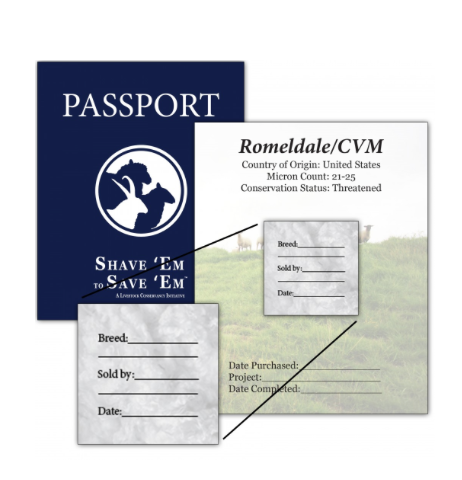
The recognition comes in the form of sticker stamps for a passport booklet. Artists share pictures of their projects with a Facebook and/or Ravelry posting. The more breeds they use, the more stamps they collect. The challenge is to complete fifteen projects in three years. There are gifts to be collected at five, ten, and fifteen projects.
Early on in the process I created a spread sheet with the breeds and my progress. The list of suppliers who can provide you with a sticker is available on the conservancy web page. Many of the shepherds also sell their fiber through an Etsy store. This is where I got most of mine. I’m not very experienced at cleaning raw fleece, so I thought it best to get roving ready to spin. To qualify, a project only need be four ounces. You could get fiber to spin, fiber to felt, or yarn to knit, weave, or crochet. These are not the only possibilities but they seem the most common.

This is a list of the endangered breeds.
It wasn’t always easy to find providers, especially at first. And several sources dried up as more people became involved in the challenge. So quickly I switched from spinning mode to acquisition. I ordered eleven samples and for several weeks fluffy packages of wool arrived in the mail.
Breed 1 – Navaho-Churro
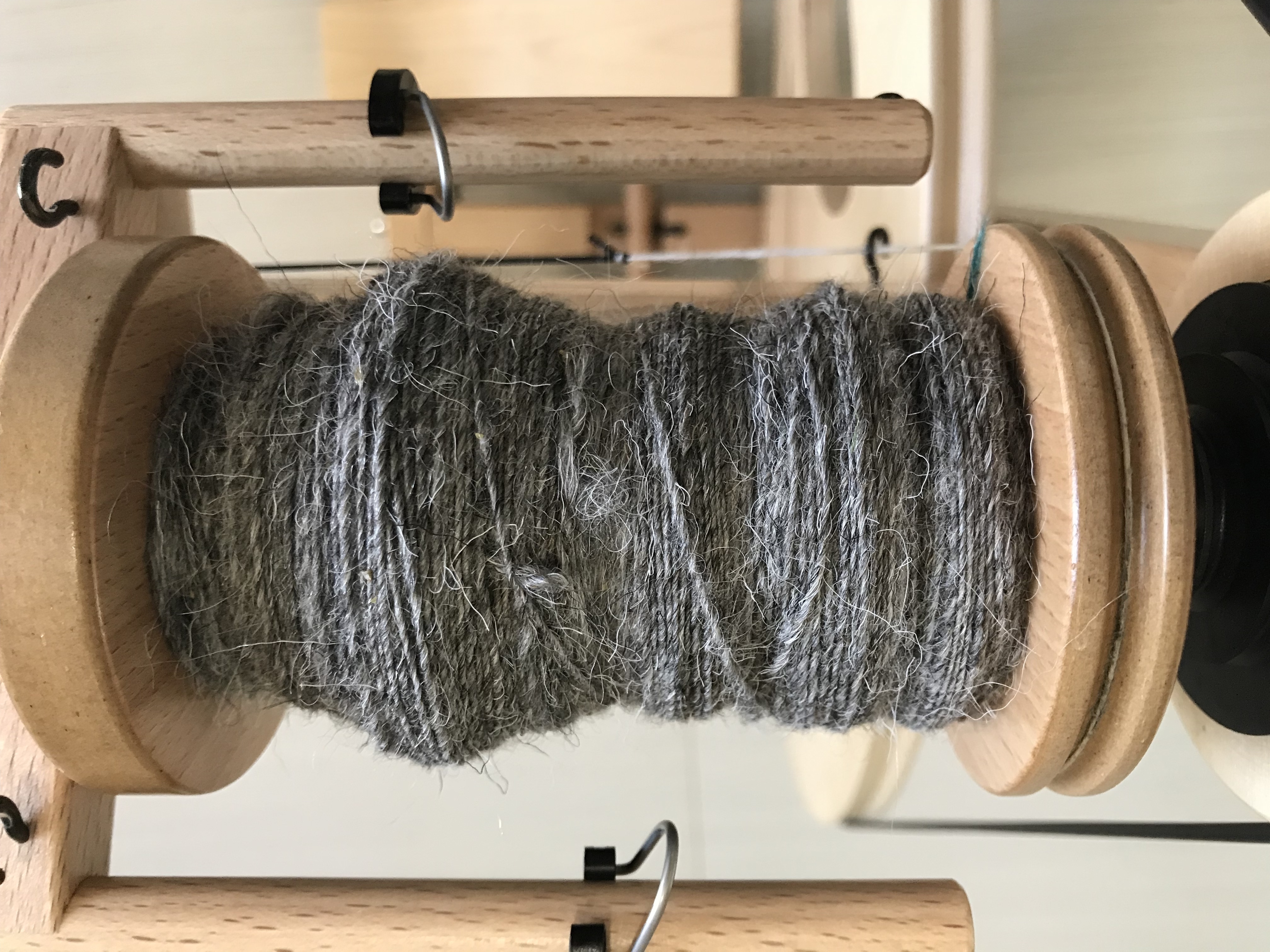
I loved spinning this fiber from the very first moment. I had taken the leap, signed up for the SE2SE program, and ordered my first fiber on Etsy. Until this time I had only ever gotten wool from the woman who taught me to spin.
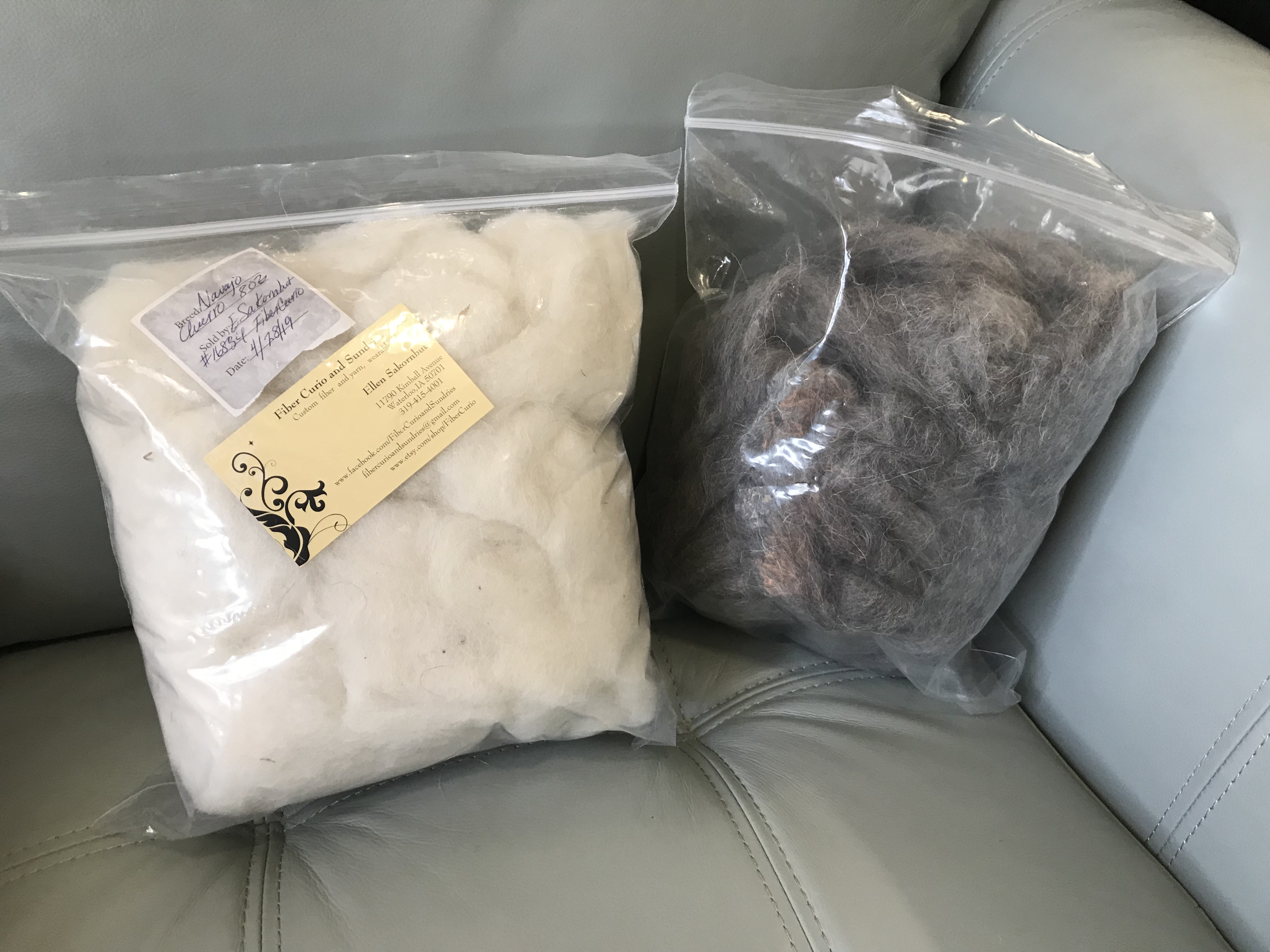
I ordered two different colors from Fiber Curio and chose the darker (blue gray roving) to start.
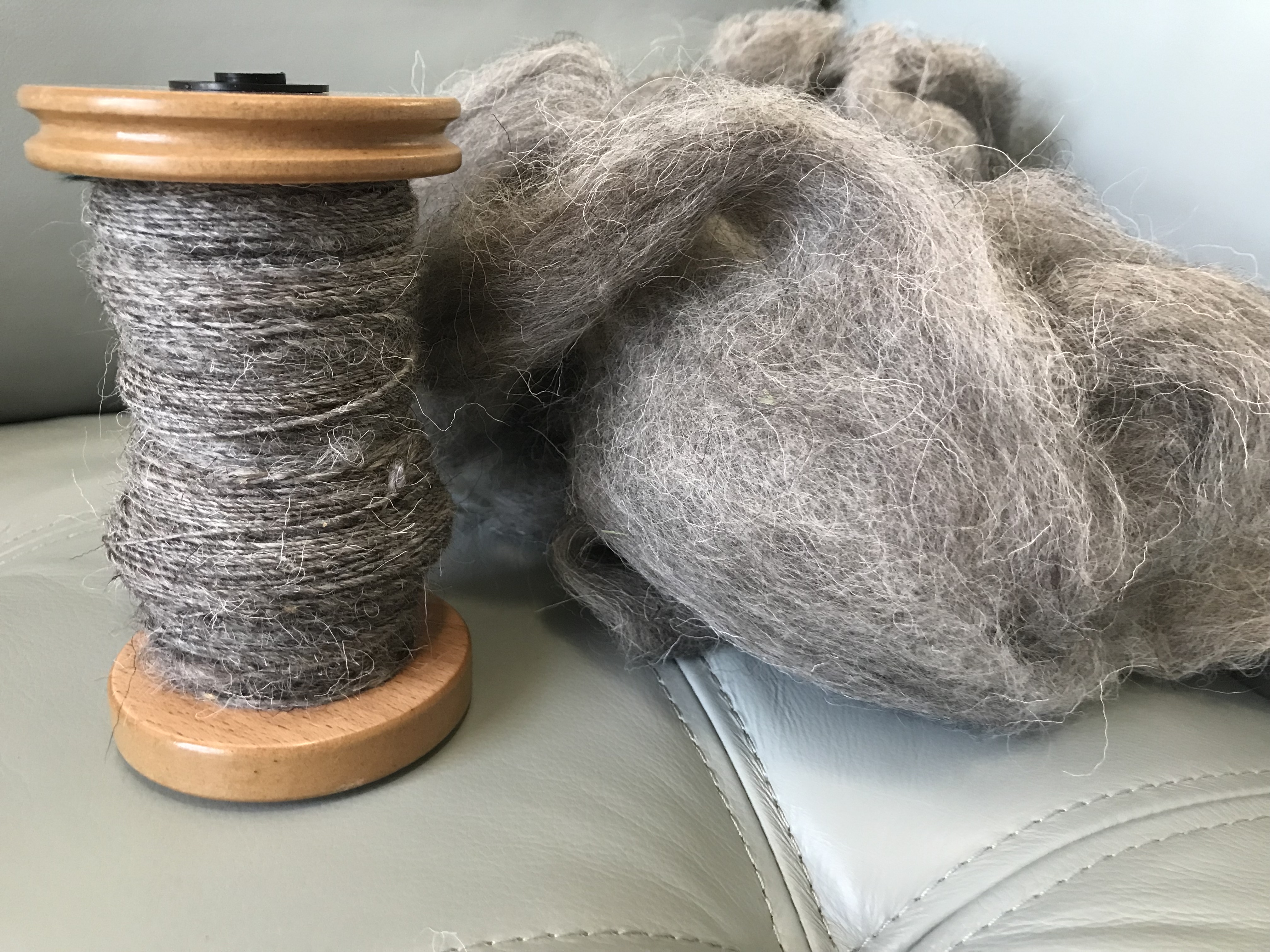
I haven’t spun the light color yet but the dark one is gorgeous. The texture of this wool is so much different than anything I had spun before. It was less soft but spun up into a very strong, even yarn. And its SO pretty!
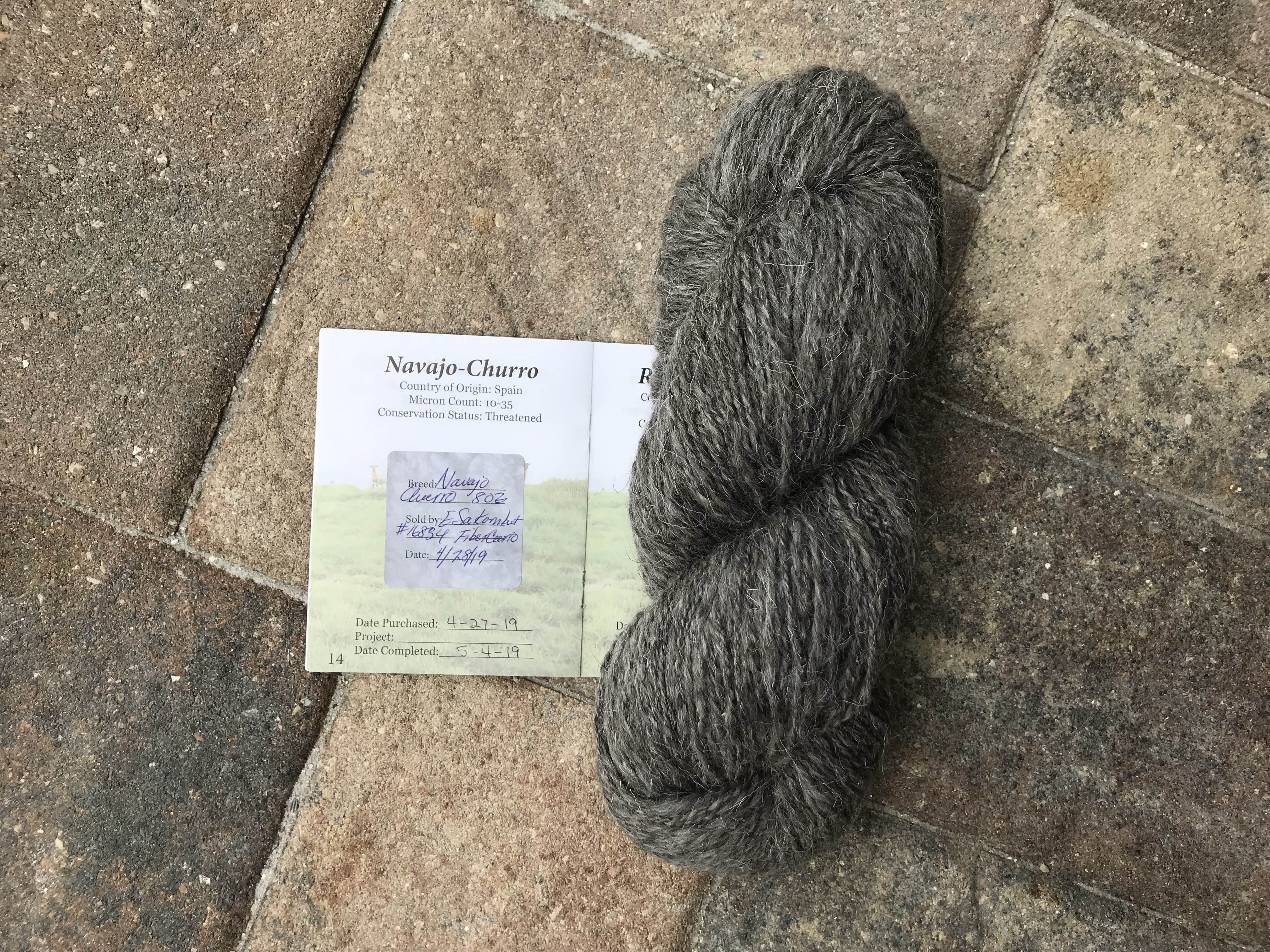
As proof of the project, you must take a picture of your work along with the passport page and the affixed sticker. It was fun finding just the right background setting.
After spinning my first fiber, Navaho-Churro, I was hooked. Though to be honest I was probably hooked after getting my sticker book in the mail. What is it about sticker books? I decided next to try to spin the four most critically endangered breeds. This would give me my first five to email in for a prize.
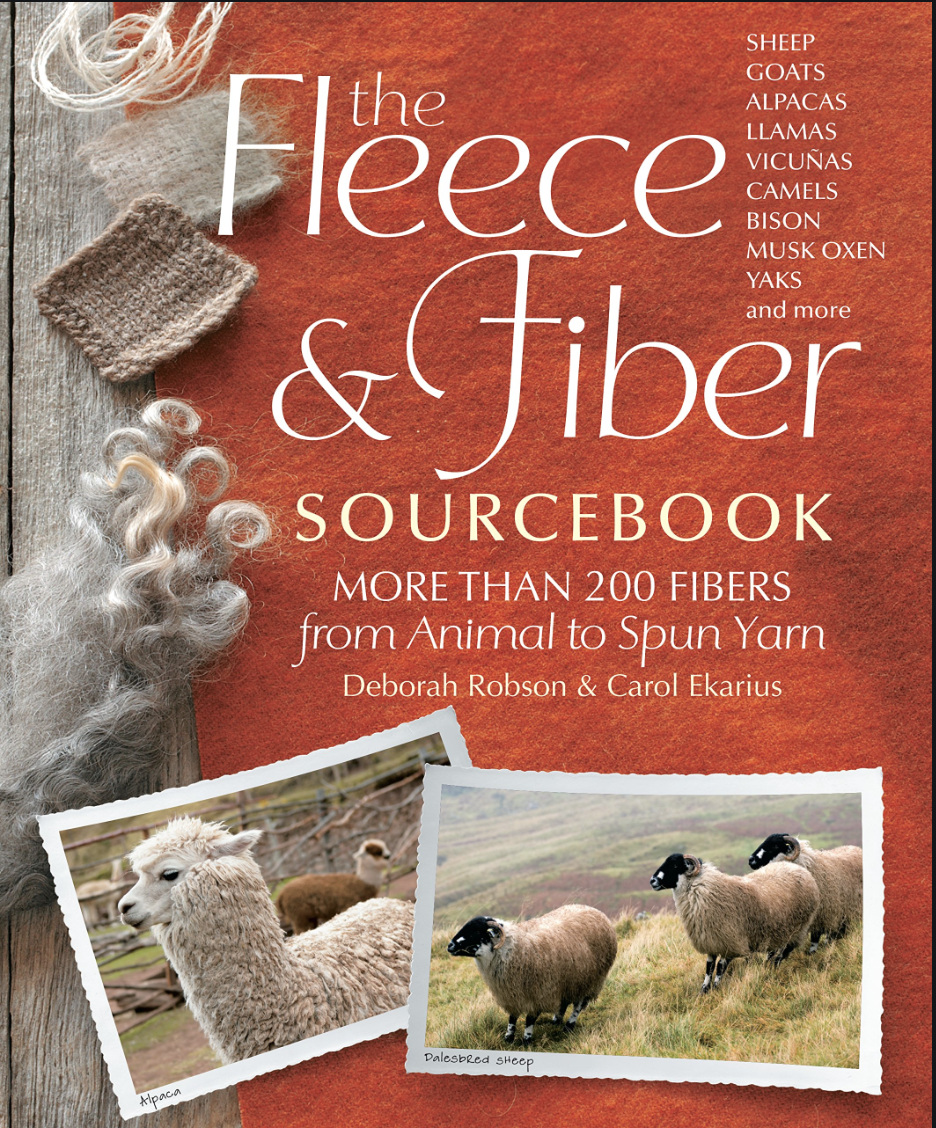
I learned a lot about each of the breeds from this book, The Fleece and Fiber Sourcebook. It describes the breed, its history, the characteristics of the fiber and gives prep and spinning tips.
The critically endangered breeds all have one thing in common. They are feral breeds, meaning reverting to a wild state after the end of captivity or domestication. Most feral sheep breeds have been left to fend for themselves on islands (or some other geographical isolation) where predation low. The sheep that survive are often small and scrappy. Some shed their wool naturally if not sheared.
The sourcebook that I have has a publication date of 2011 and in it Florida Cracker is not yet recognized as a separate breed from the Gulf Coast Native. The Livestock Conservancy does recognize this as a separate, though likely related, breed.
Breed 2 – Hog Island

Hog(g) Island sheep are the descendants of sheep raised communally on a barrier island off the coast of Virginia. The sheep became feral when the humans abandon the island in 1933 after a devastating storm. After many generations on their own, they were removed from the island in 1974 to encourage the return of the native grasses to the island.
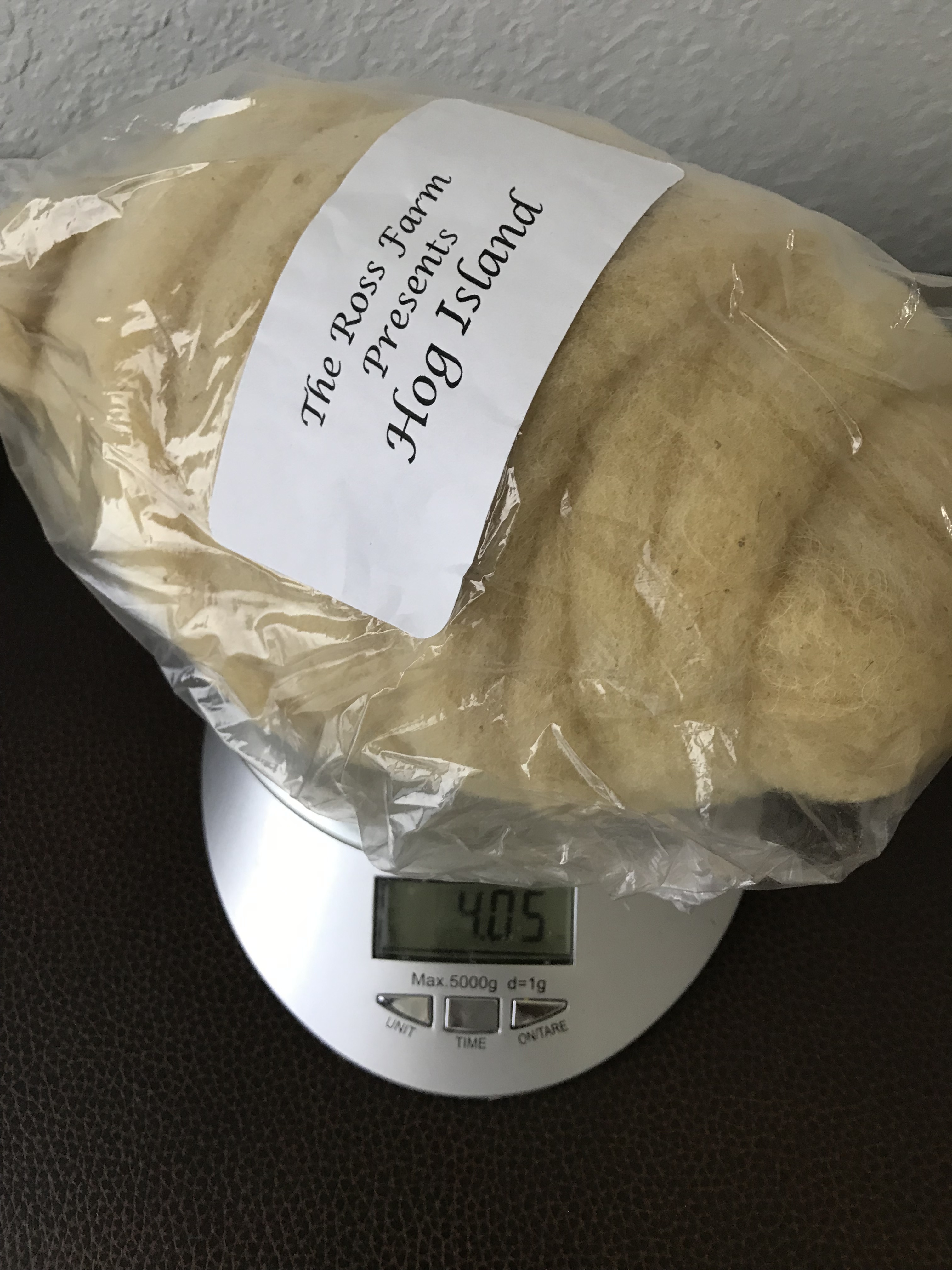
When I start spinning, I always divide the fiber in half by weight. In this way, I can spin each half and then ply them together. It never comes out exactly even, but I’m also getting pretty good at plying from the two ends of a ball that I have wound from whatever is left on one bobbin.
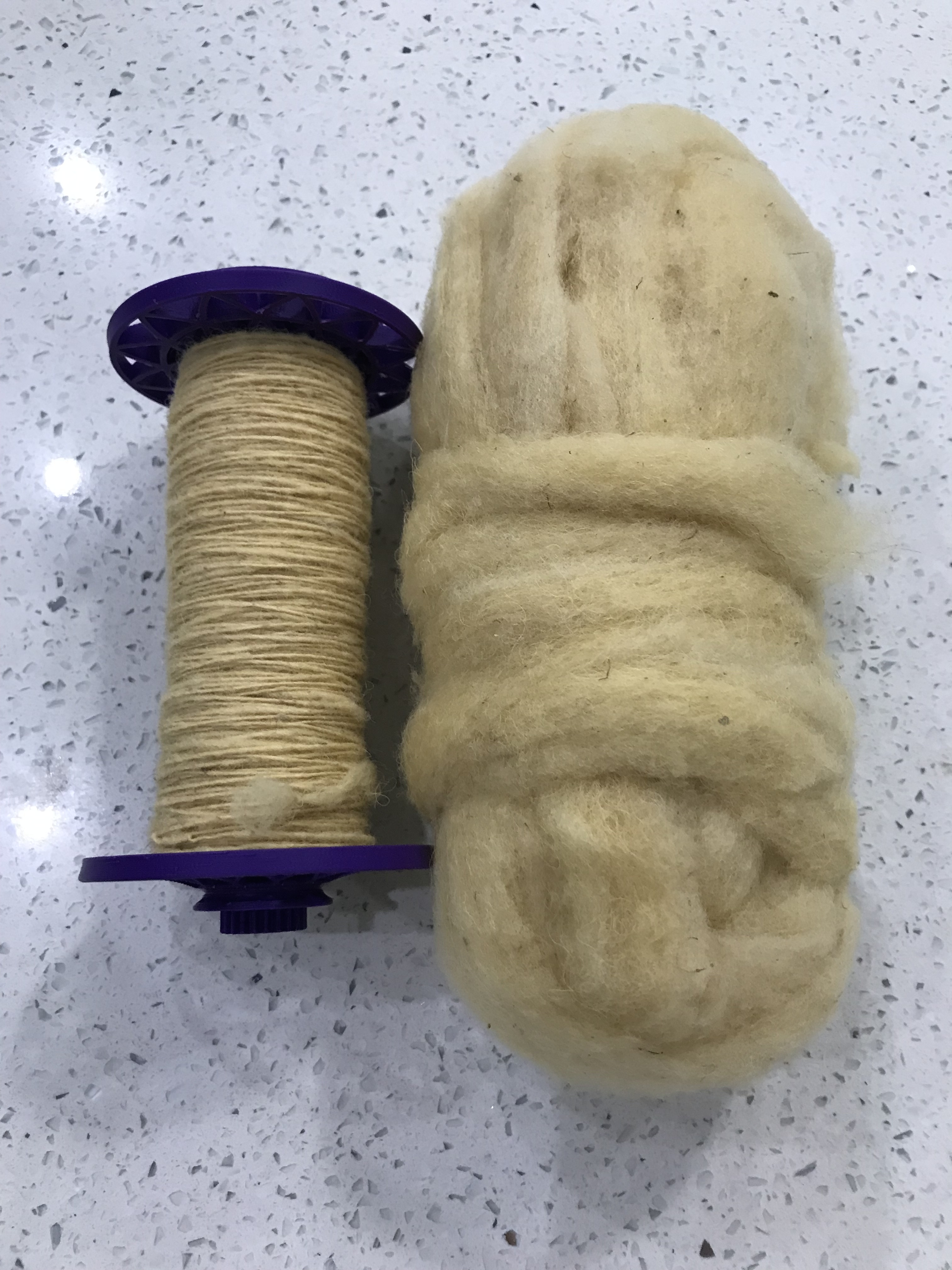
This Hog Island fiber, from The Ross Farm, had more lanolin than other preparations I have spun. Not too much, just a bit more than I am used to. This is apparently common for sheep experiencing the survival pressure of harsh stormy weather on islands. As a result, my hands were really soft after spinning.
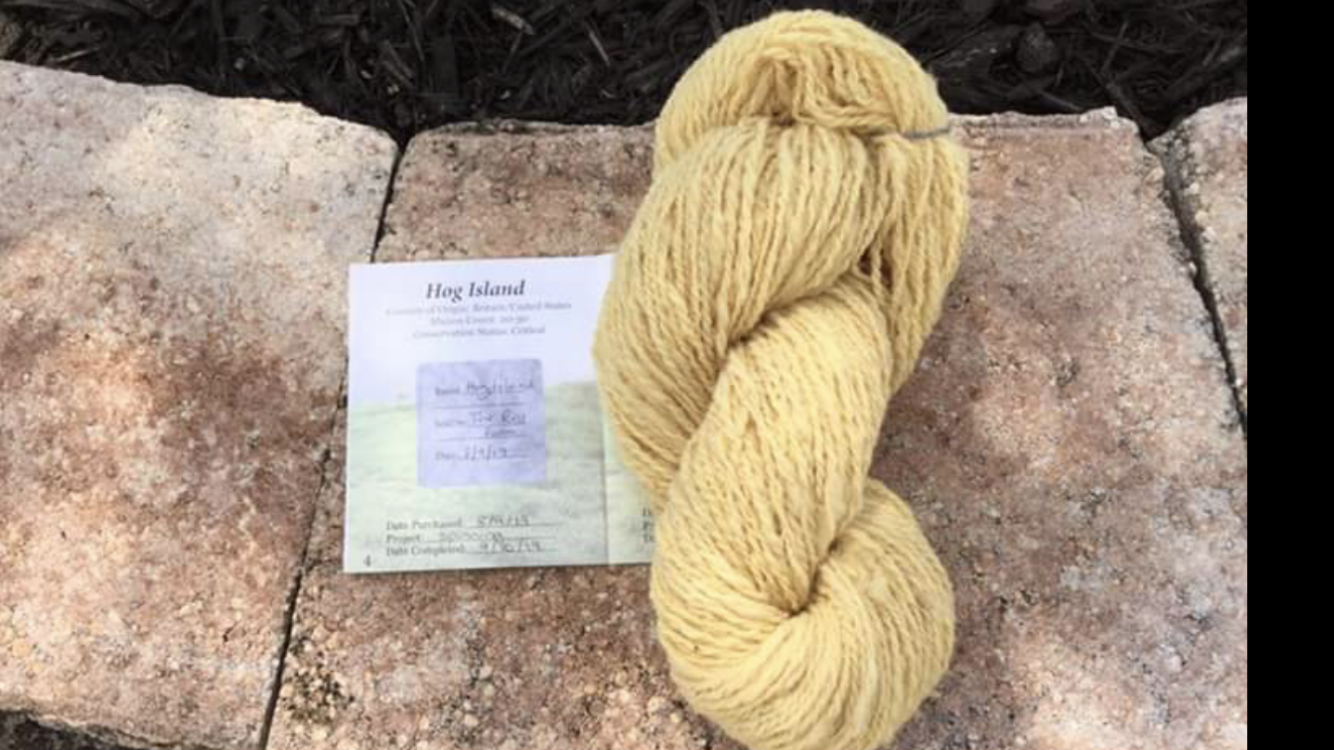
When I posted this picture on the Shave ‘Em to Save ‘Em Facebook page a reader asked what I had used to dye the yarn. I had asked the supplier why it was so yellow when I first got it. I knew that some types of yellowing were caused by undesirable processes. But she assured me that this was its natural color.
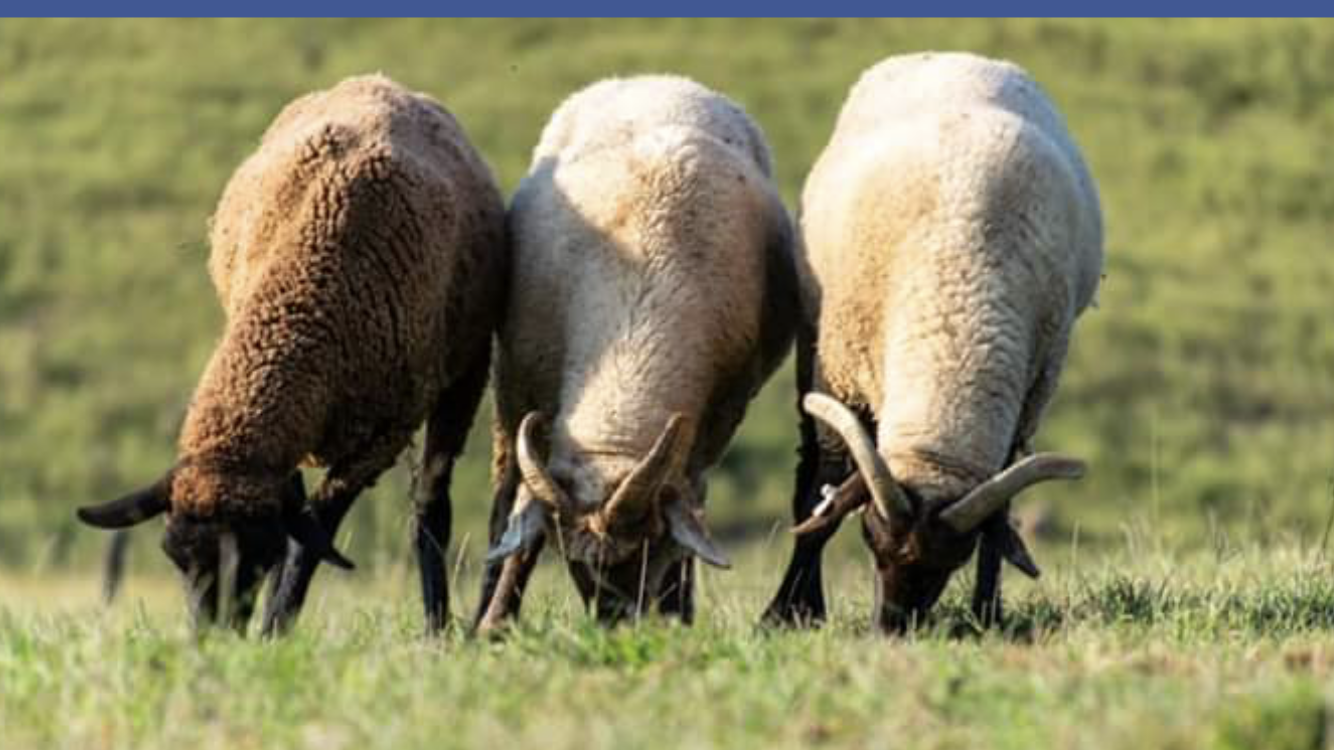
She even commented in the post with this picture of the sheep! 😍
Breed 3 – Florida Cracker
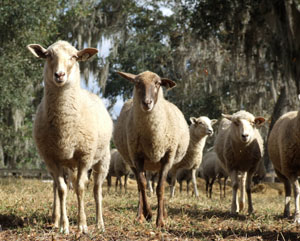
According to the Livestock Conservancy, Florida Cracker is one of the oldest breeds in the United States. It is believed that these sheep are the descendants of sheep brought here in the 1500’s by the Spanish. Their characteristics are the results of hundreds of years of natural selection in the subtropical weather of Florida. Prior to 1949 they ranged free for most of the year, being brought in twice a year for shearing and marking lambs. They are very parasite resistant and can have lambs, often twins, twice a year.
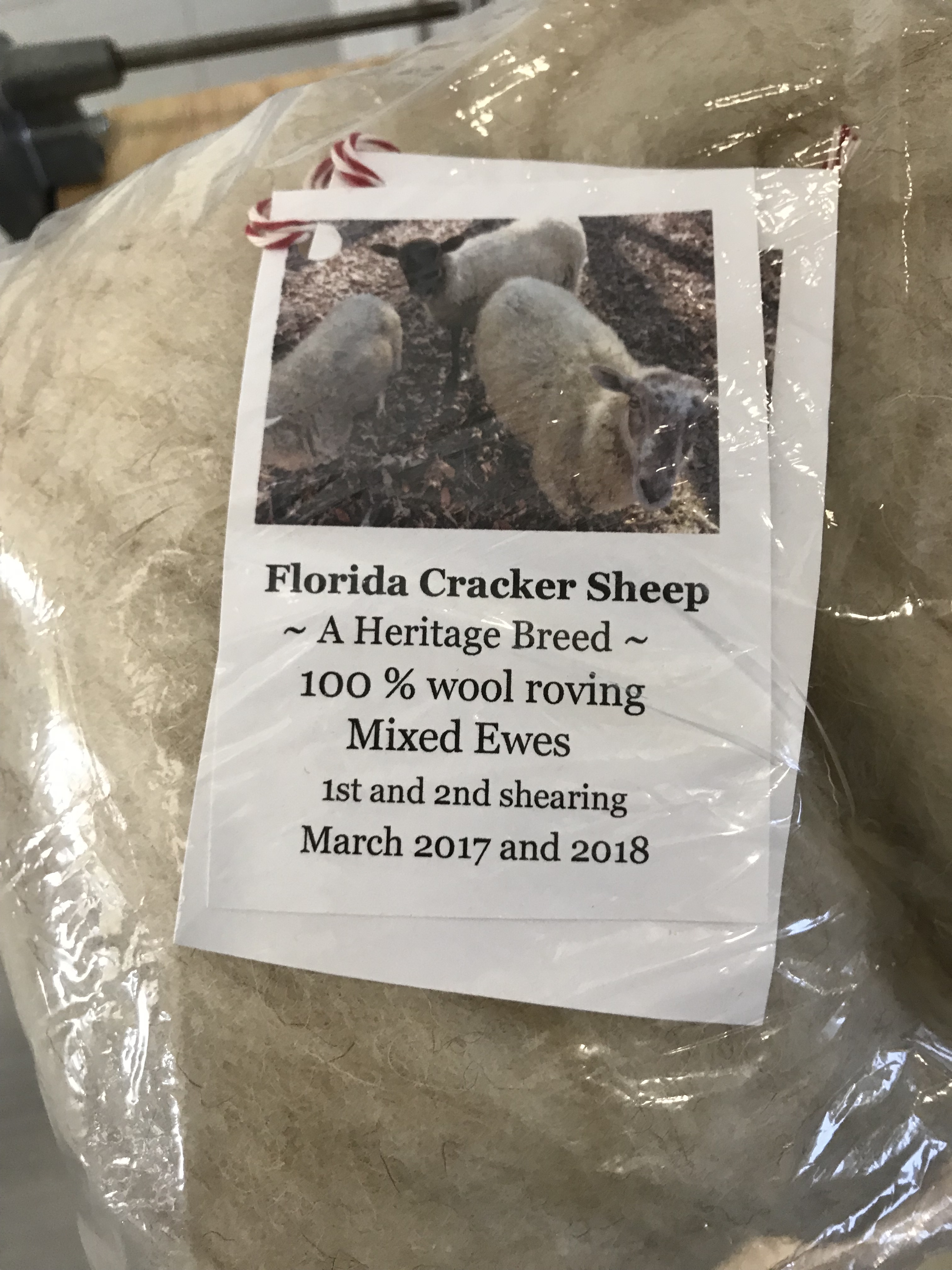
I again chose 4 ounces of roving this time from Rusty Bee Ranch.
The fiber was beautiful and easy to spin.
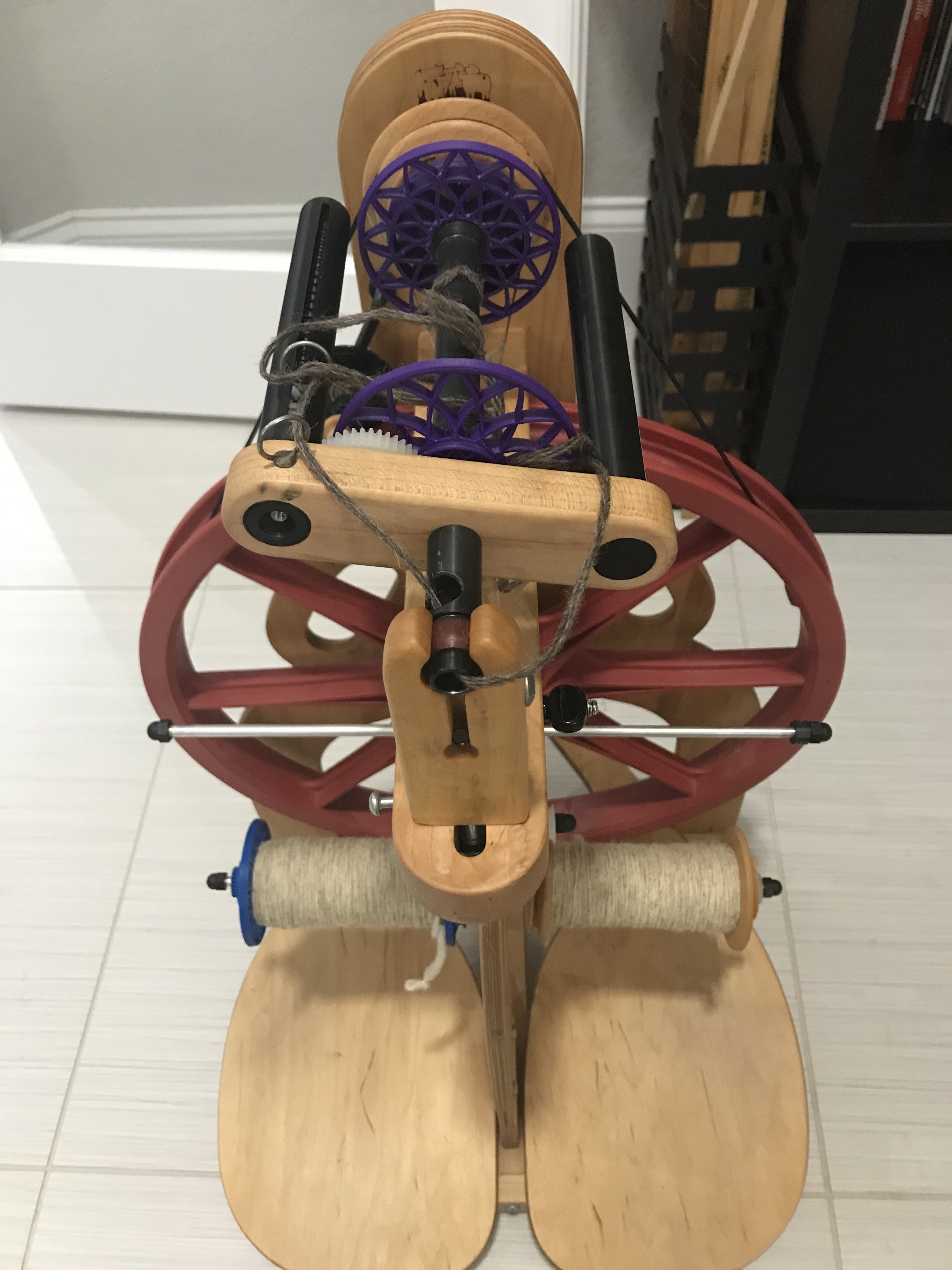
Even though I divided the fiber in half by weight, you can see that the two bobbins are not equally full. I am still working on getting my fiber spun consistently.
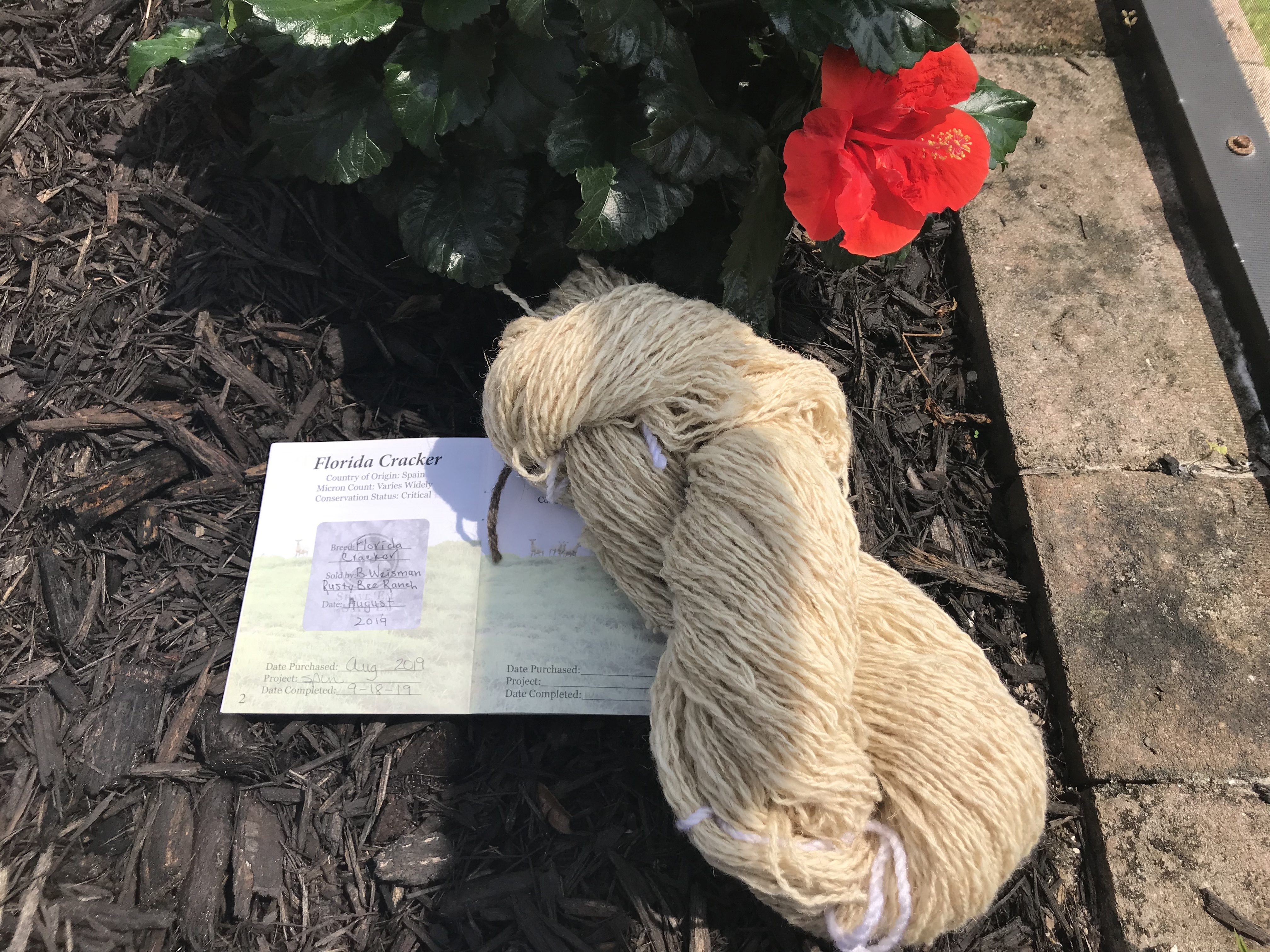
Another pretty setting for the record picture.
Breed 4 – Gulf Coast Native
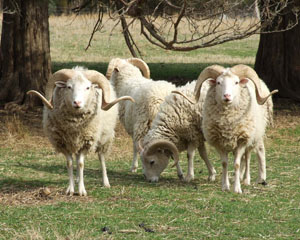
These sheep descended from half-wild sheep living in the southeast United States. After WWII they were displaced by larger, more productive breeds which were now able to survive the heat and parasites with the help of modern medications. But the Gulf Coast Native breed had evolved a natural resistance to internal parasites and foot rot which affect the more recent breeds. In addition, they can eat many undesirable noxious plants such as kudzu and honeysuckle.
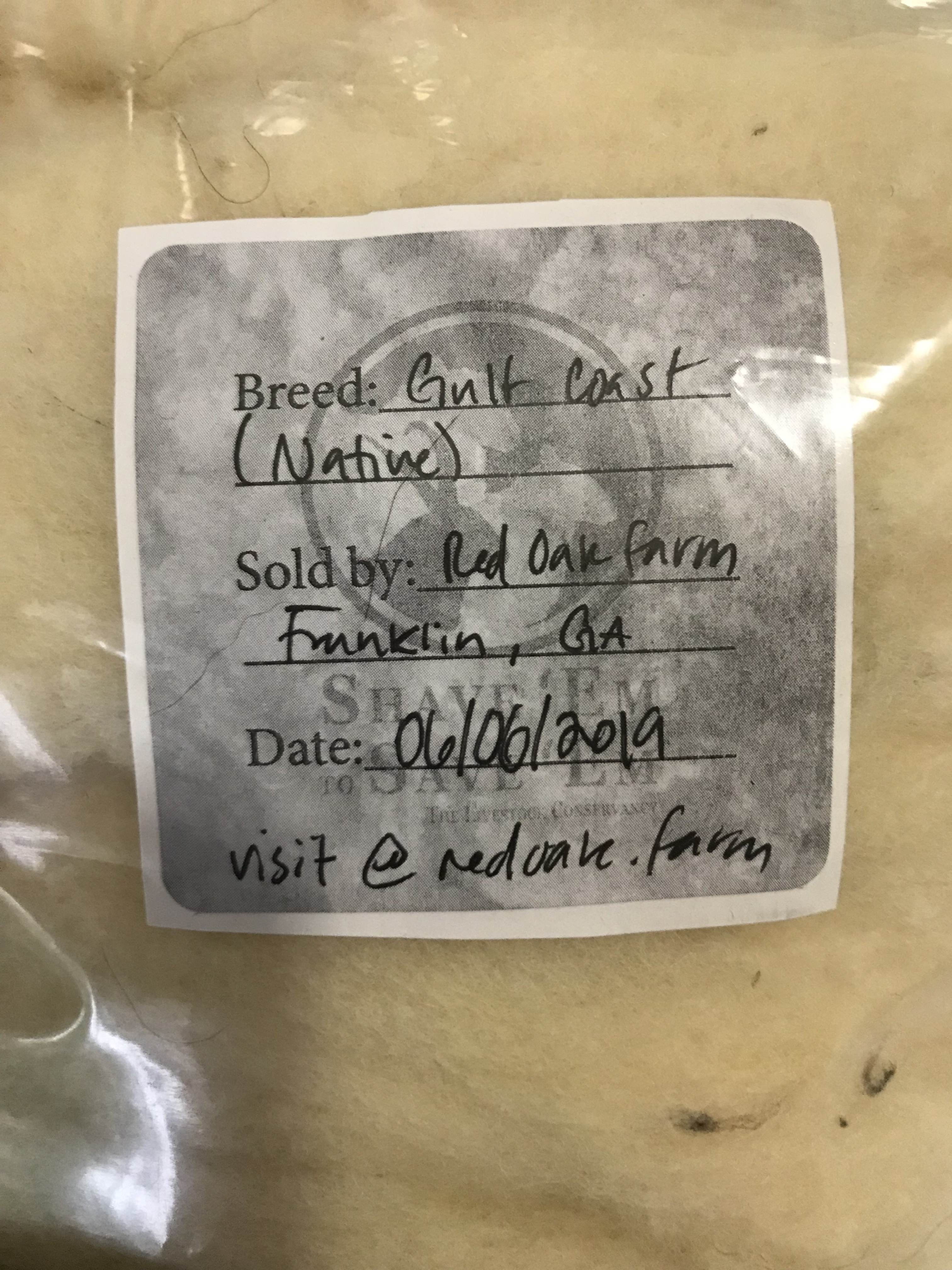
I again chose the 4 ounce roving. This time from Red Oak Farm.
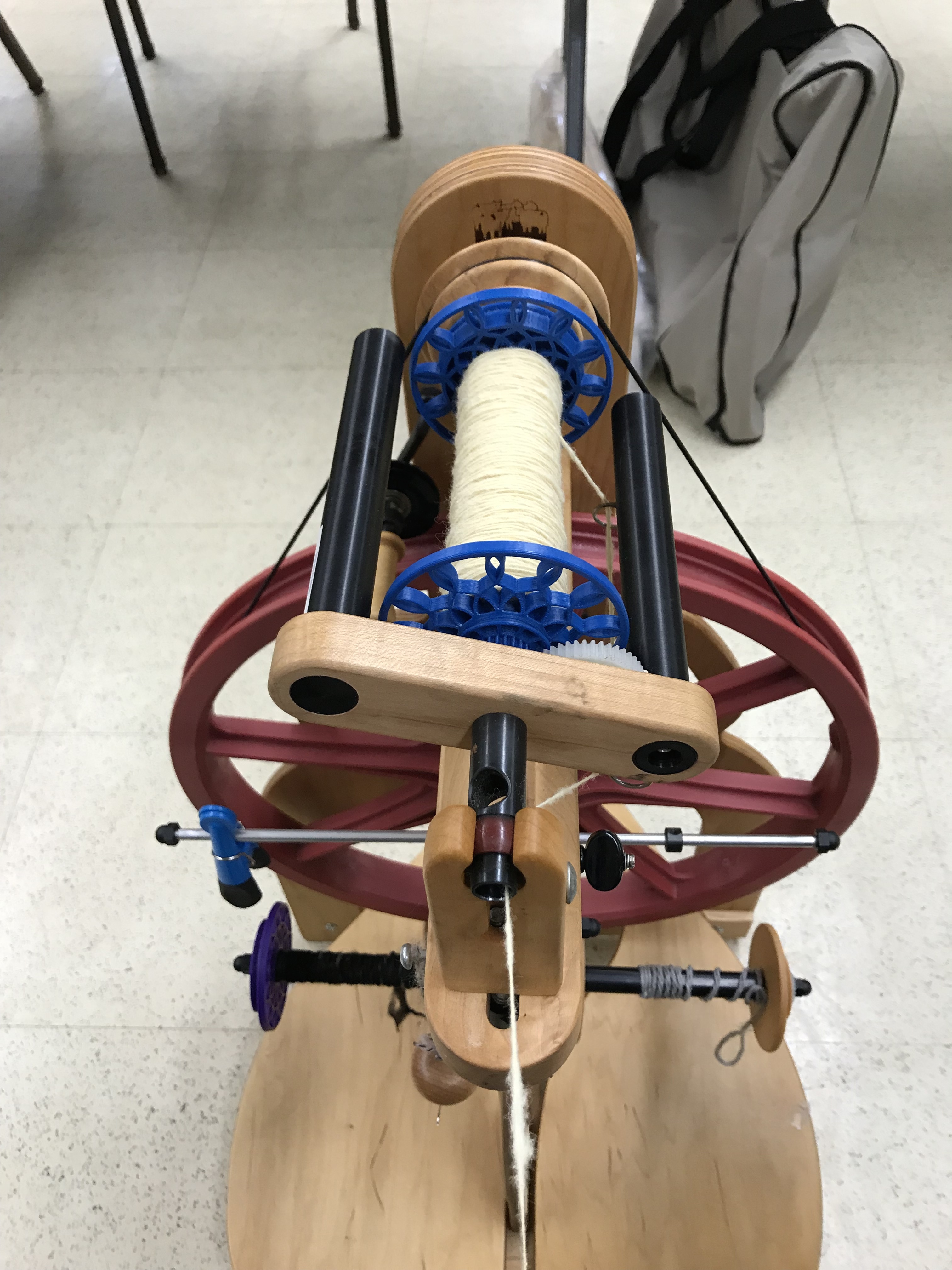
I had saved some of the SE2SE fiber, including the Gulf Coast Native, for a spinning retreat in Baraboo WI in October. It was fun to share the challenge with other spinners who had not heard of it.
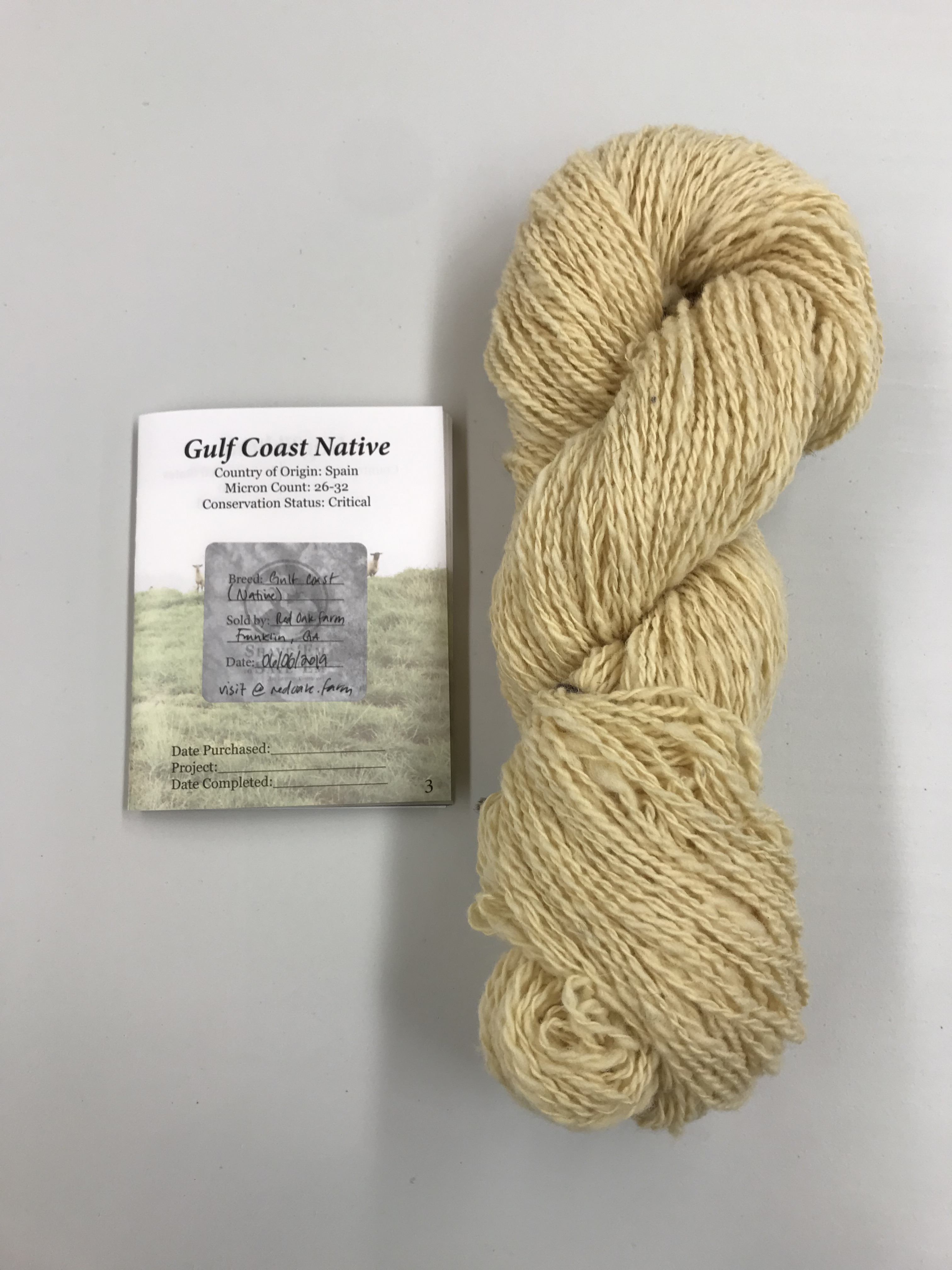
Another spinner suggested that I tie the skein on the niddy-noddy with the ends of the yarns for a better look. I agree the picture is better without the contrasting distraction of colored ties.
Breed 5 – Santa Cruz Island
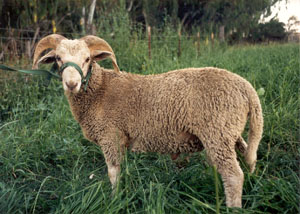
These sheep are named for Santa Cruz Island, one of the channel islands off the coast of California. There is some question about the history of the sheep but like other breeds isolated on islands they are hardy and well adapted to their environment. They have all been removed from the island. Most were slaughtered on site, but five California shepherds brought some sheep off the island. Because they have been removed from the environment in which they were adapted, they will not remain the same. New pressures will lead to the differential survival of future generations with different traits being favored. They will still be valuable as a source of genetic diversity.
This yarn, from Blue Oak Canyon Ranch, was very fun to spin. It was spongy and springy. There was a bit more VM in this sample than in some others but I like spinning and didn’t mind picking it out as a went along.
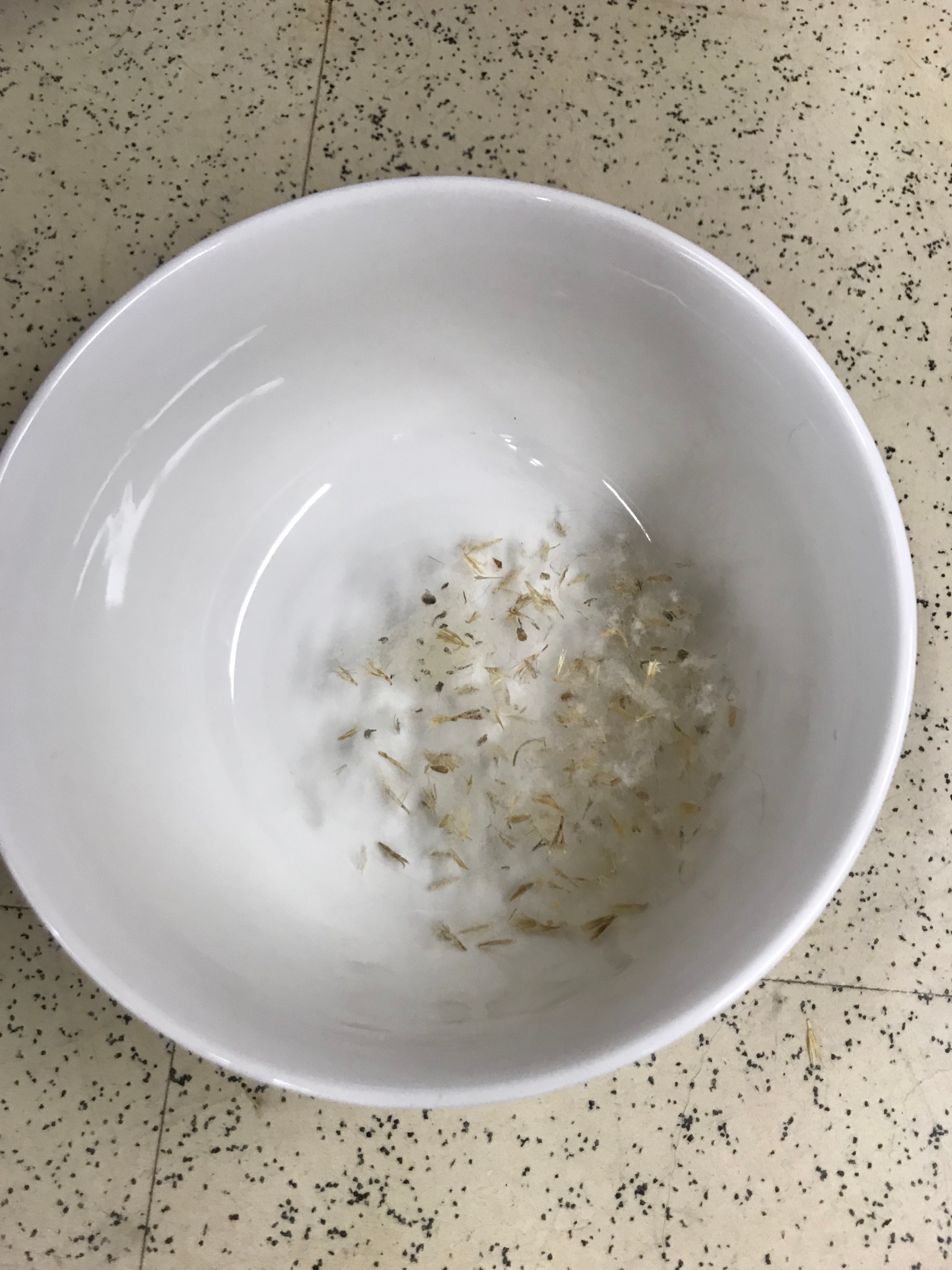
One of the other spinners did ask why I had a “bowl of oats” sitting next to me.😂
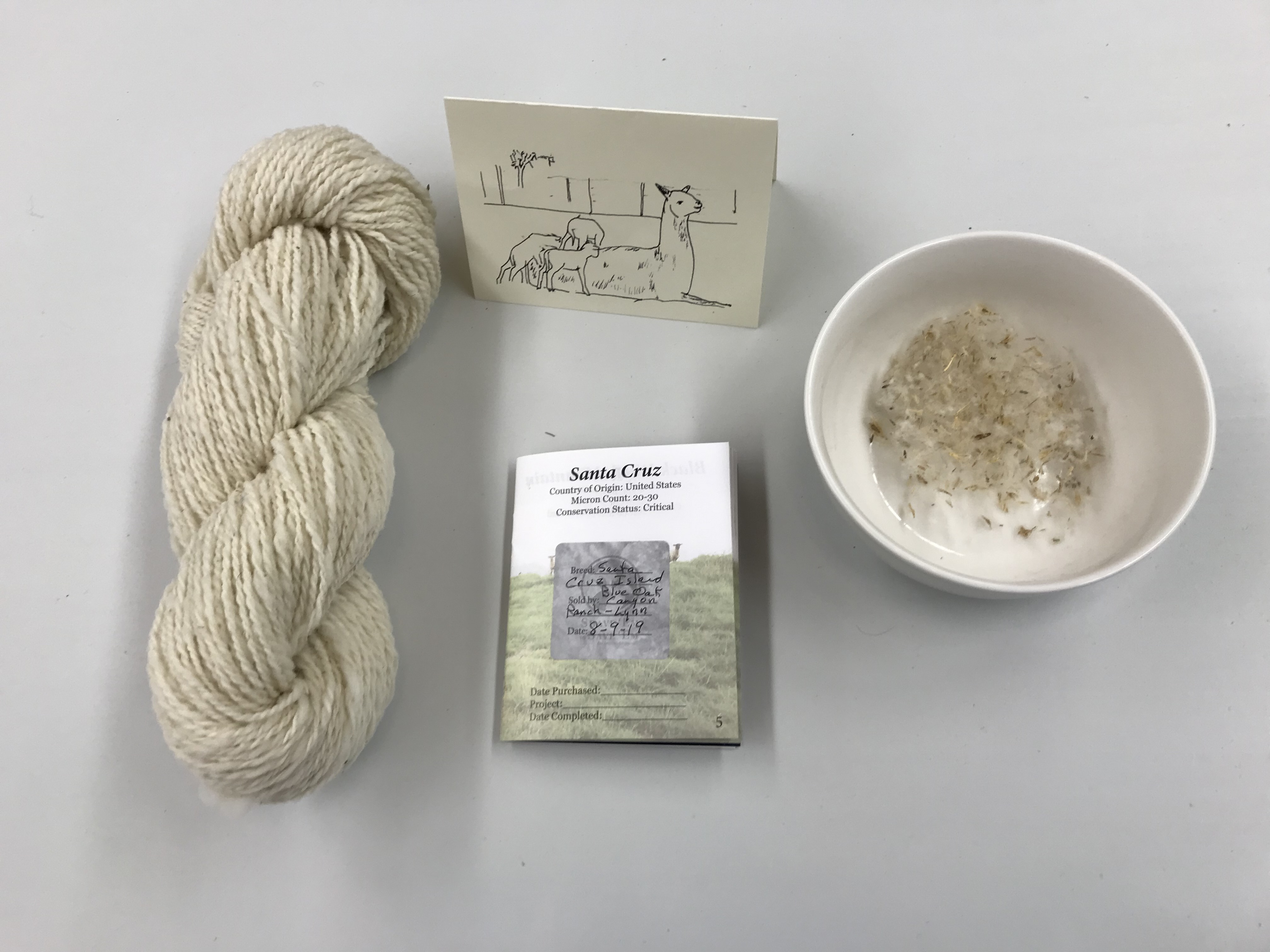
Someone told me that this fiber cannot be spun commercially. Take that for what it’s worth. This was one of my favorites because it was so unique.
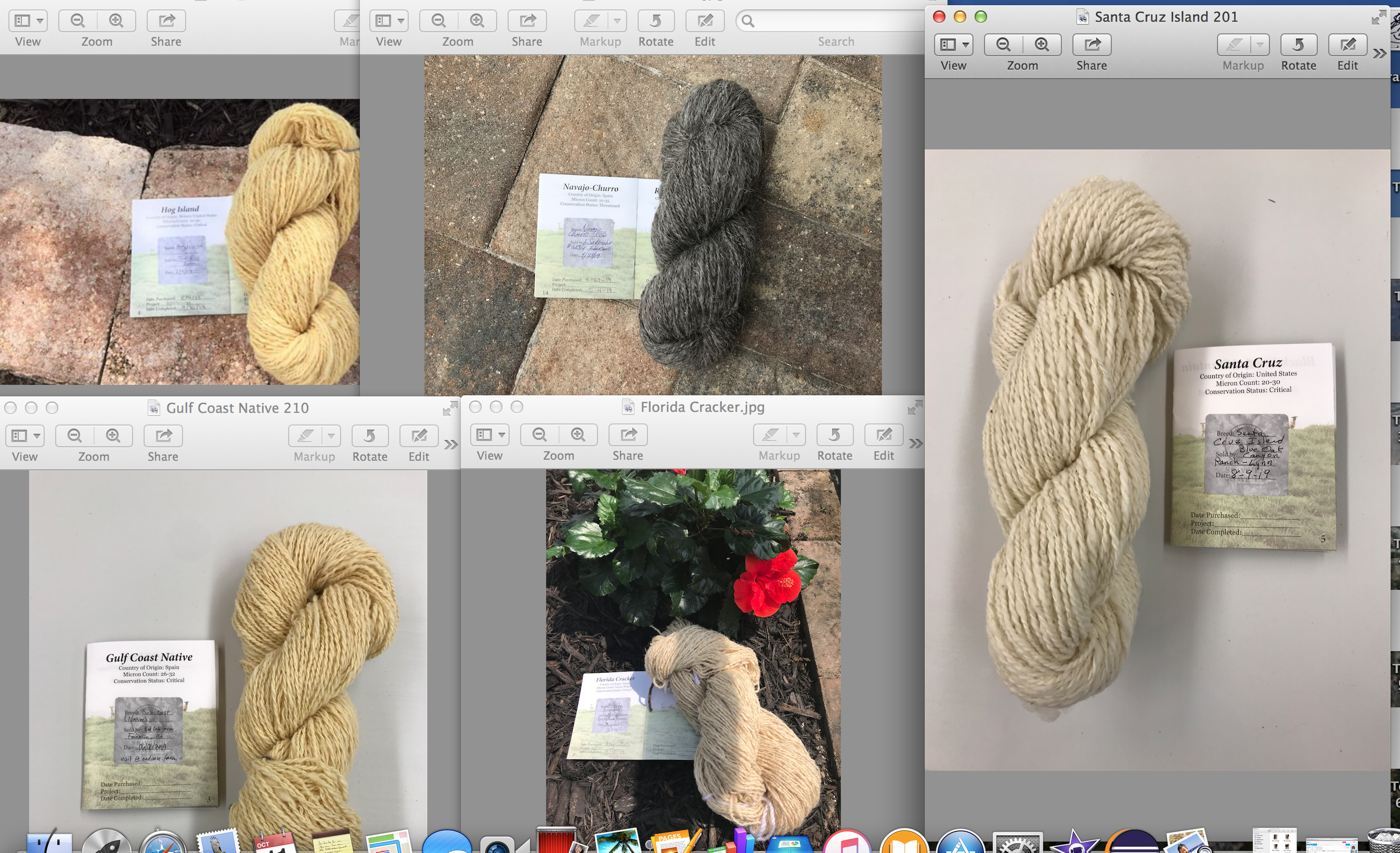
It was great to finish my first five projects including the critically endangered breeds. My plan is to weave the yarn into “walking around bags” for my siblings and myself. As I looked over the yarn I discovered that there were many light natural colors and I needed some contrast for the patterns. I decided to spin up the Jacob next because of it rich brown color.
Breed 6 – Jacob

Sheep with spots! The fiber from this breed comes in many colors. Sometimes the colors are kept separate and sometimes they are mixed. They are sometimes kept as “ornamental” sheep.
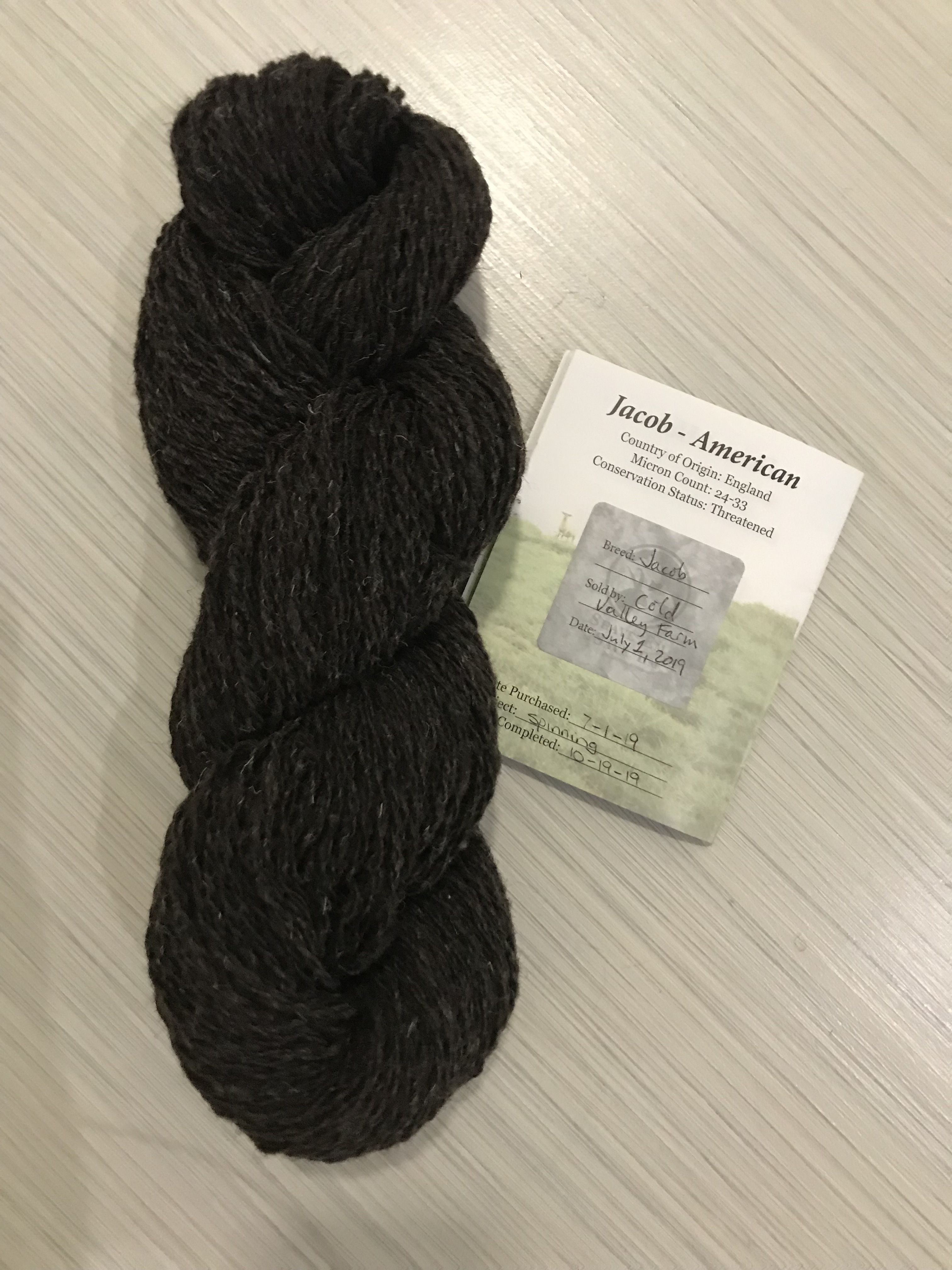
The fiber that I purchased, 4 ounce roving from Cold Valley Farm was a rich, dark brown. It was easy to spin and will make a great addition to my woven bags as a contrast to the lighter fiber previously spun.
From here on out, I guess I will spin whatever catches my fancy. Today I ordered four more breeds on Etsy. Now I have the fifteen projects needed to complete the challenge. I will post them here as edits as I get them done.
If you are a spinner perhaps you will like this idea and join the challenge. In addition to the stated goals, I feel that it has really helped me grow as a spinner and contributed much to my knowledge of wool fiber.
As always, your polite and helpful comments are welcome.
Update:
Well, I finally finished all 15 breeds. Here are some pictures and thoughts.
Breed 7- Black Welsh Mountain
This information is from the Livestock Conservancy website:
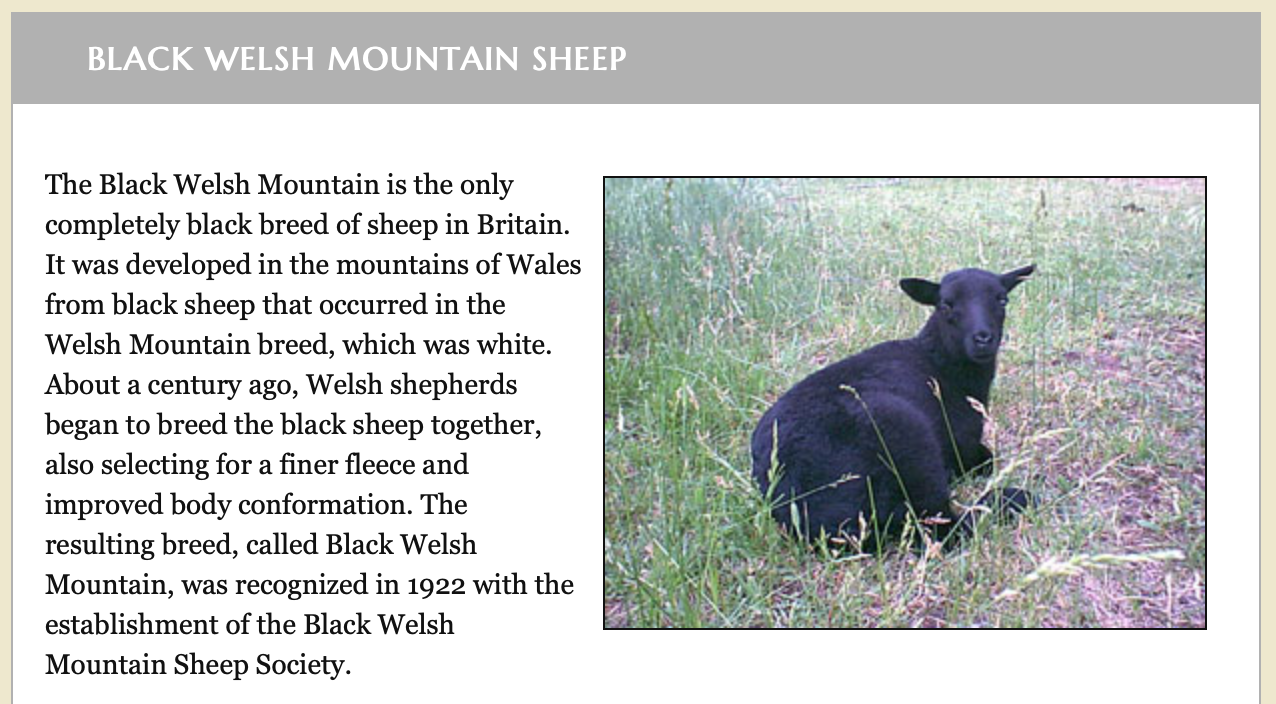
This is the darkest wool that I spun. It is beautiful.
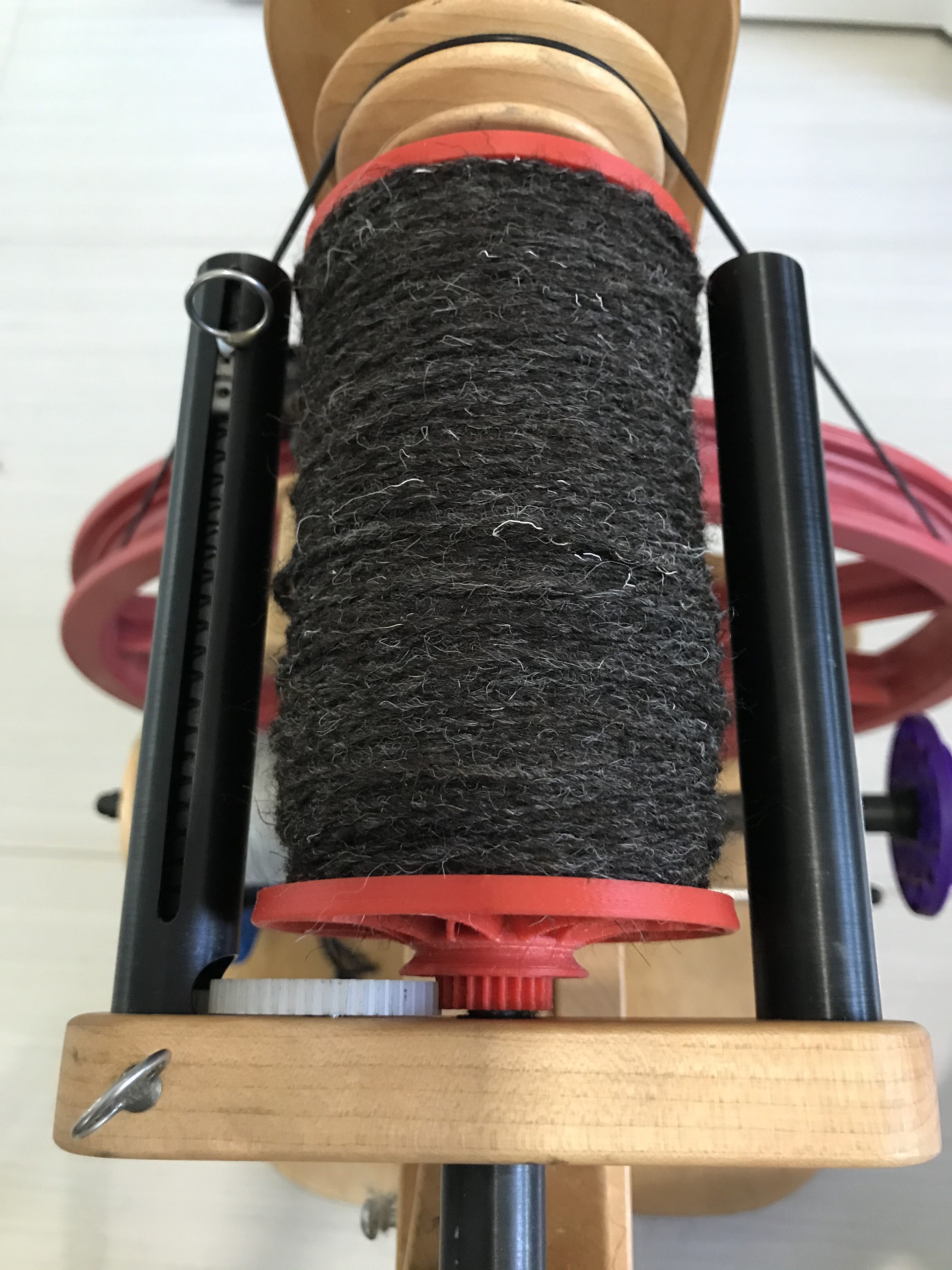
This close up really shows the variation in the fibers. These are black sheep that were bred from white ancestors.
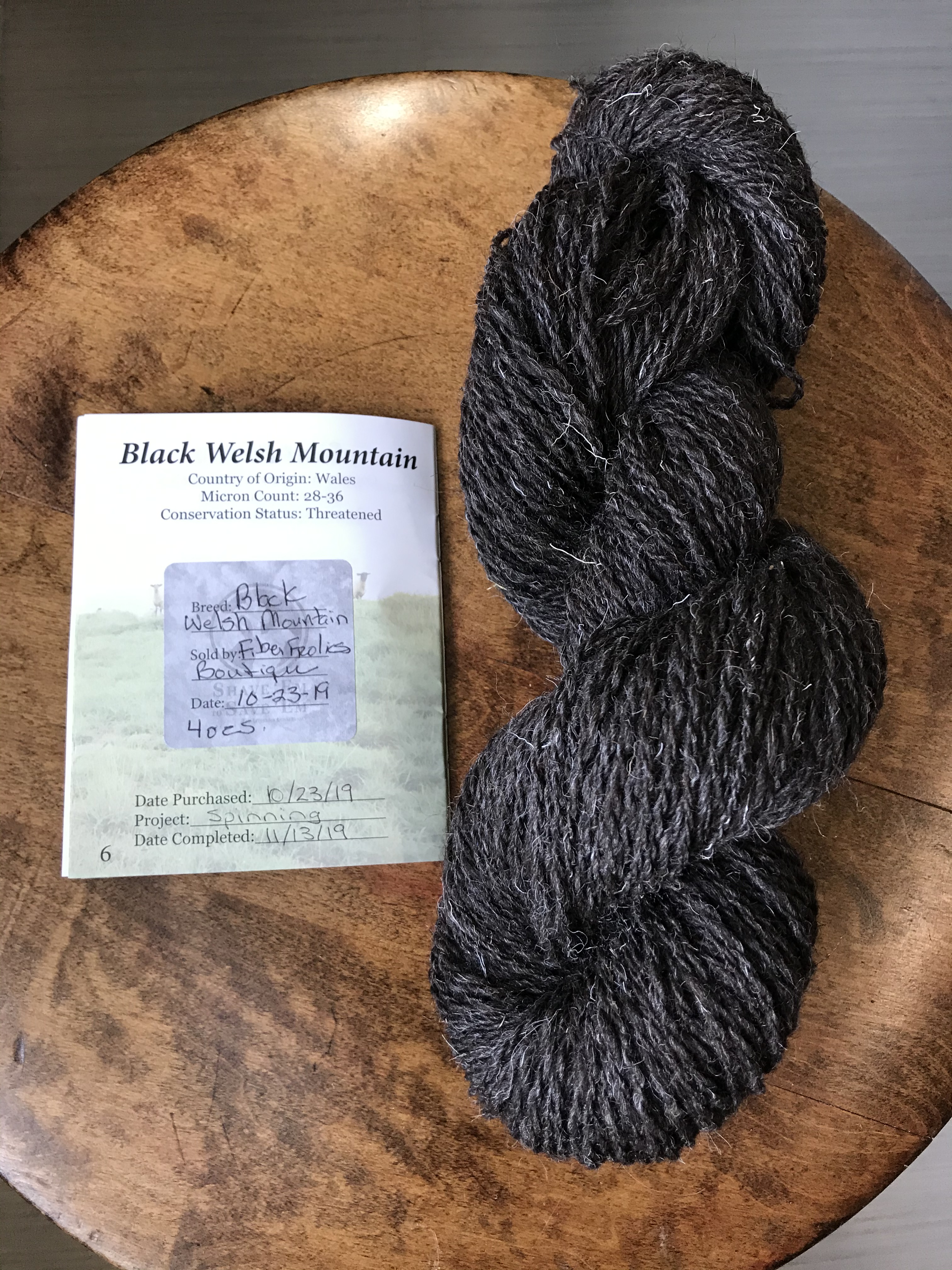
Breed 8 -Karakul American
This information is from the Livestock Conservancy website:
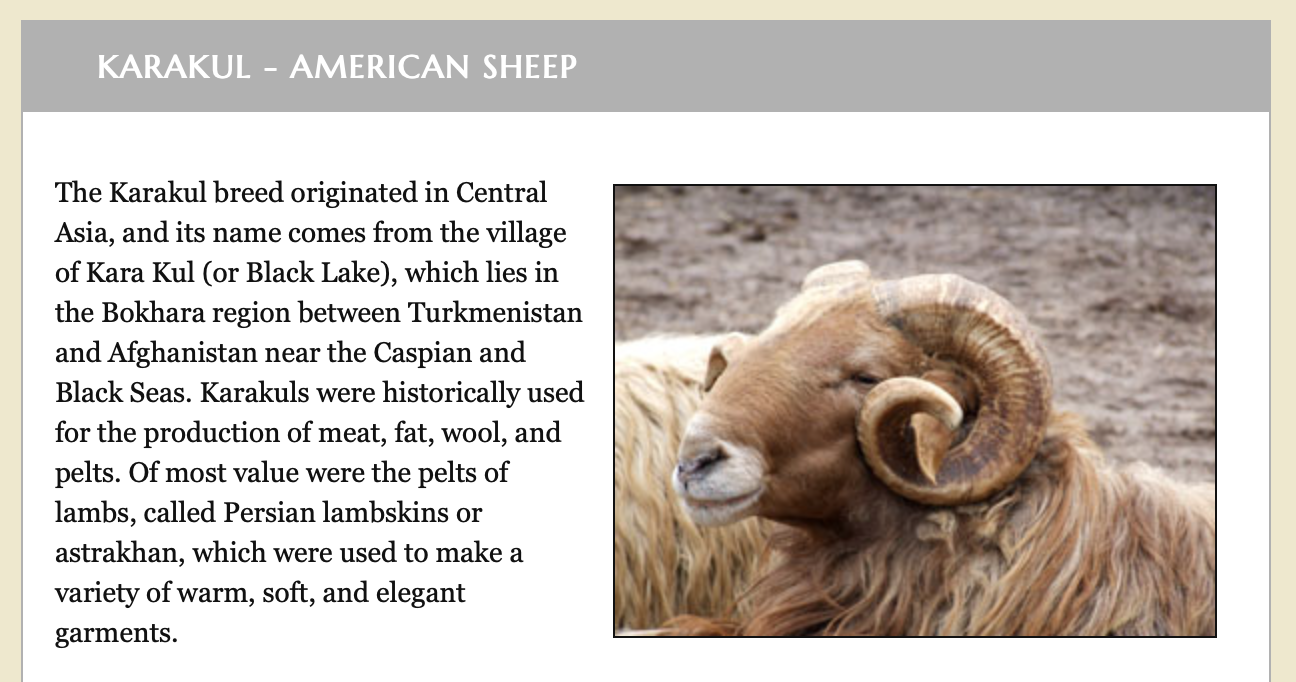
While most of the sheep I read about are managed for their wool or meat, these are sometimes used as pelts. The wool is very curly when the lambs are young (and even unborn).
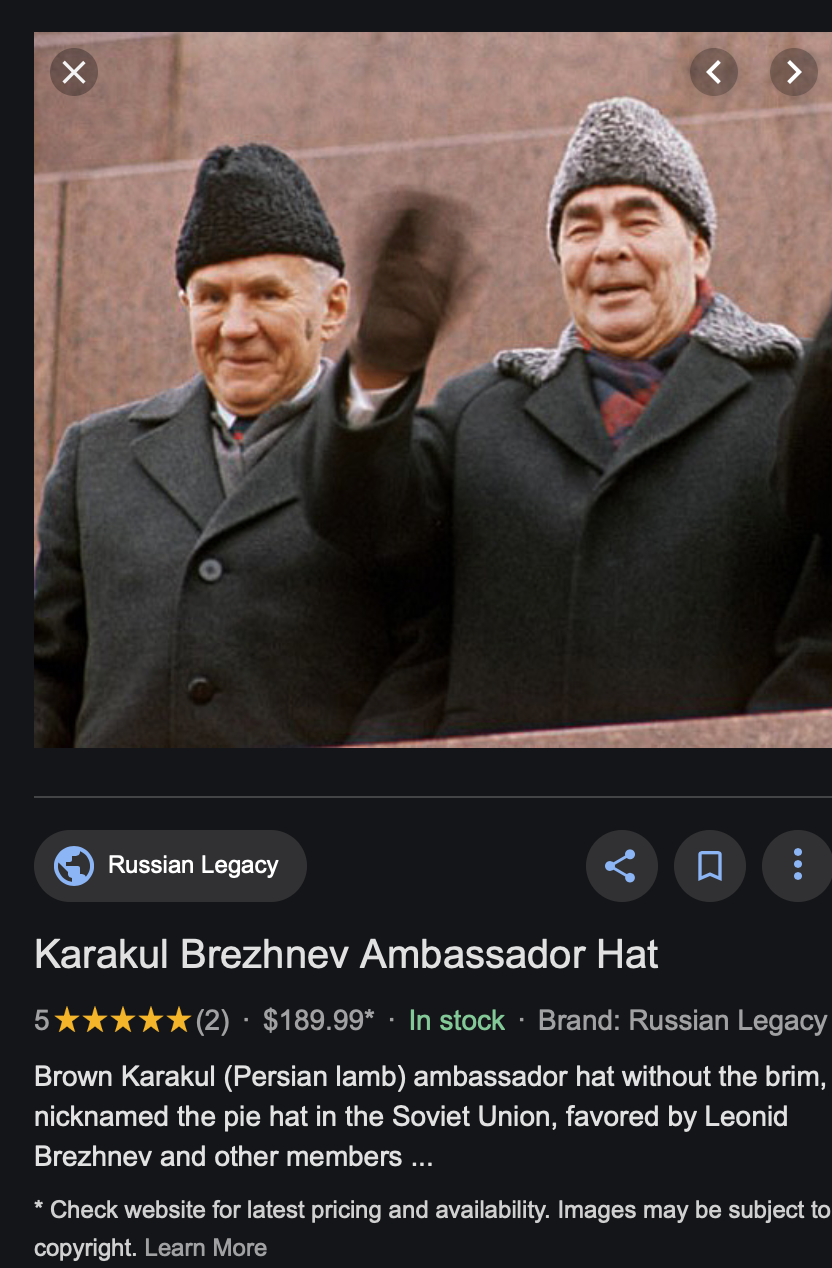
In the 1970s several Russian officials were pictured in Karakul hats and they became very fashionable.
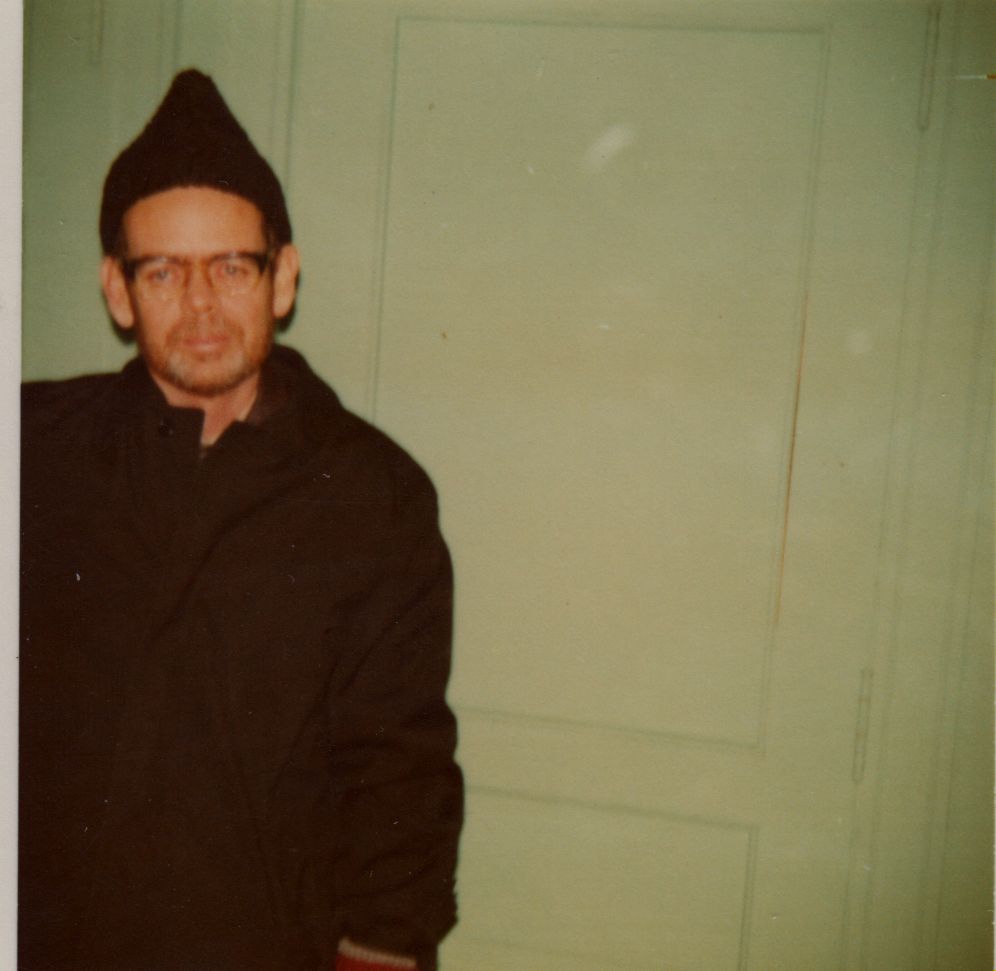
I even remember my father wearing something similar. I wonder if his was real wool or artificial.
This was the only sample that I bought that had some dyed fibers. All the rest are natural color, but I think this is very pretty.
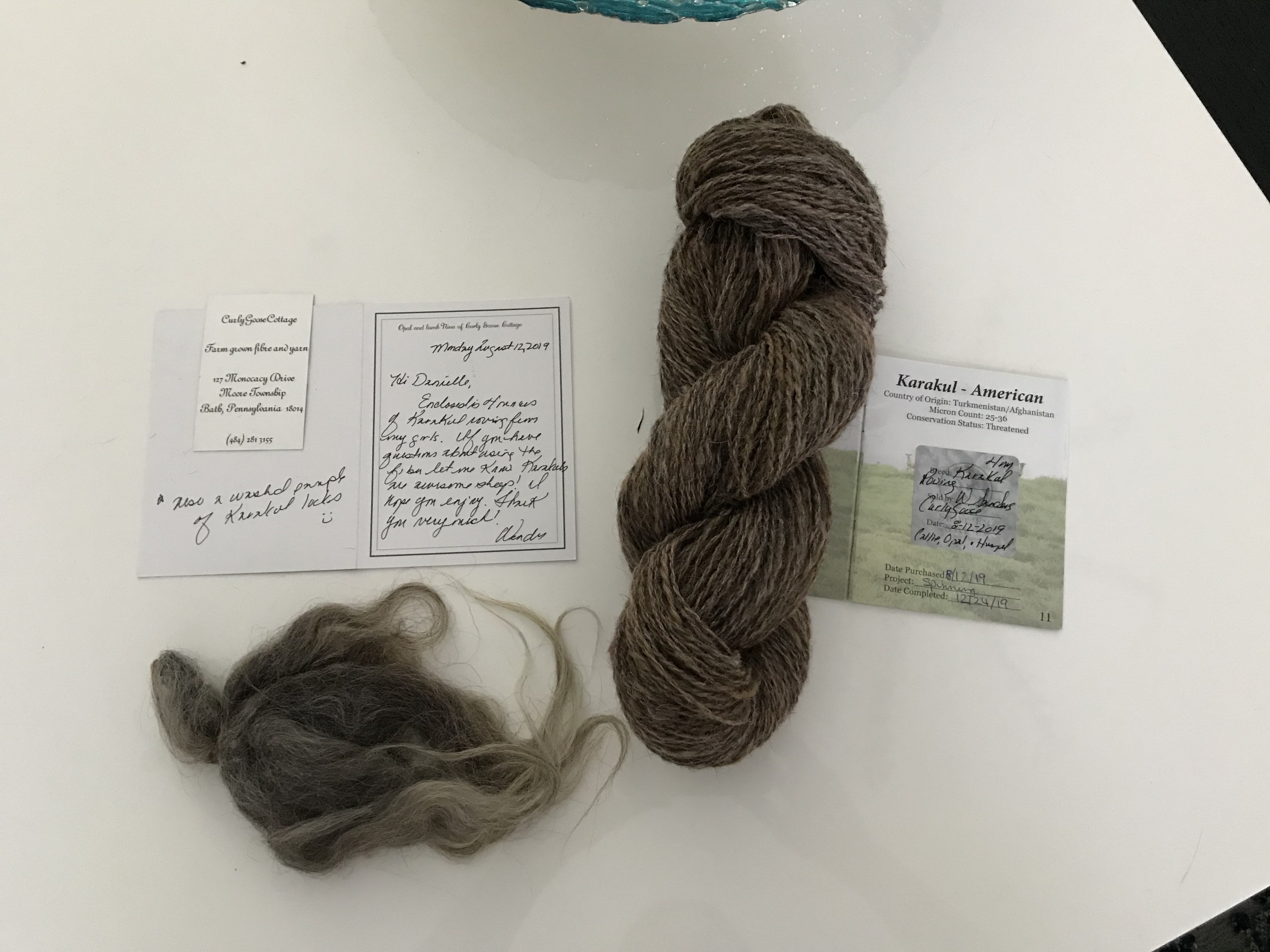
It spun up very nicely and the provider even sent along a few extra locks. I didn’t spin those yet, but I can’t wait to try.
Breed 9 -Leicester Longwool
This information is from the Livestock Conservancy website:
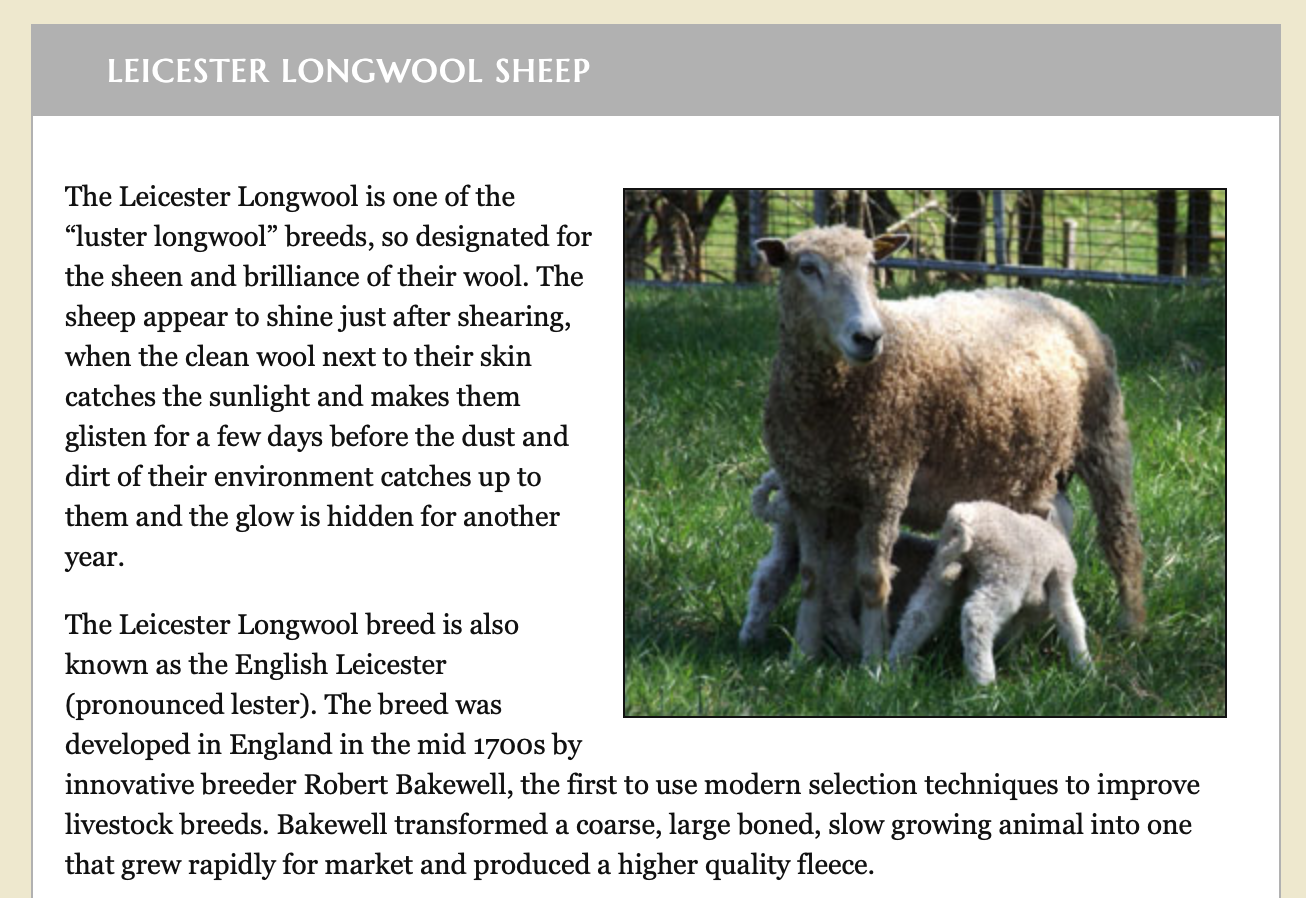
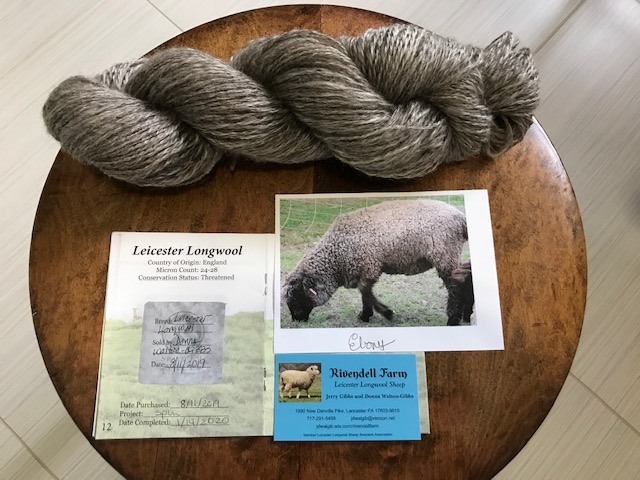
This wool was so long! And Donna, the provider, sent me a picture of Ebony, the sheep that provided the wool. I love that.
Breed 10 -Shetland
This information is from the Livestock Conservancy website:
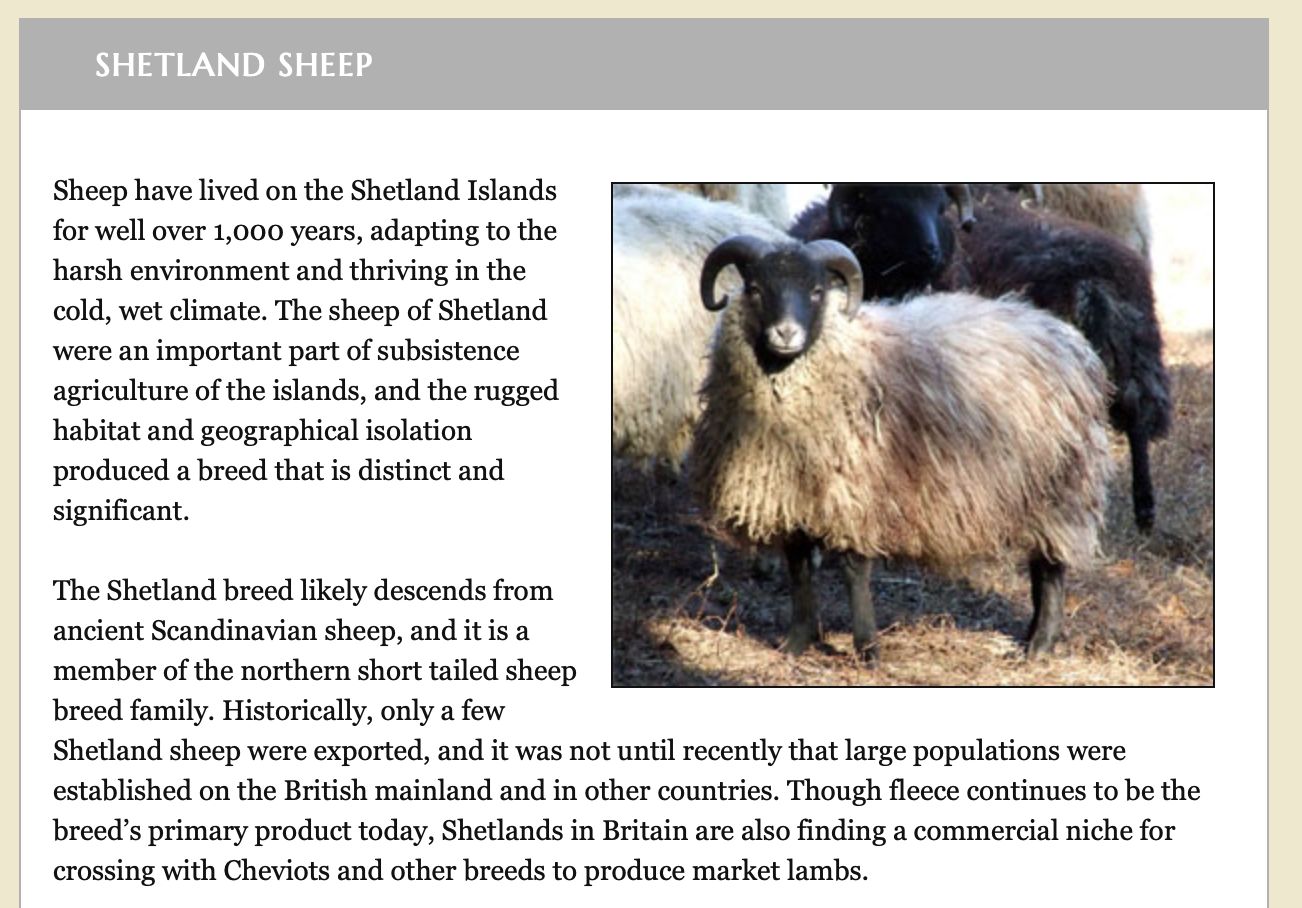
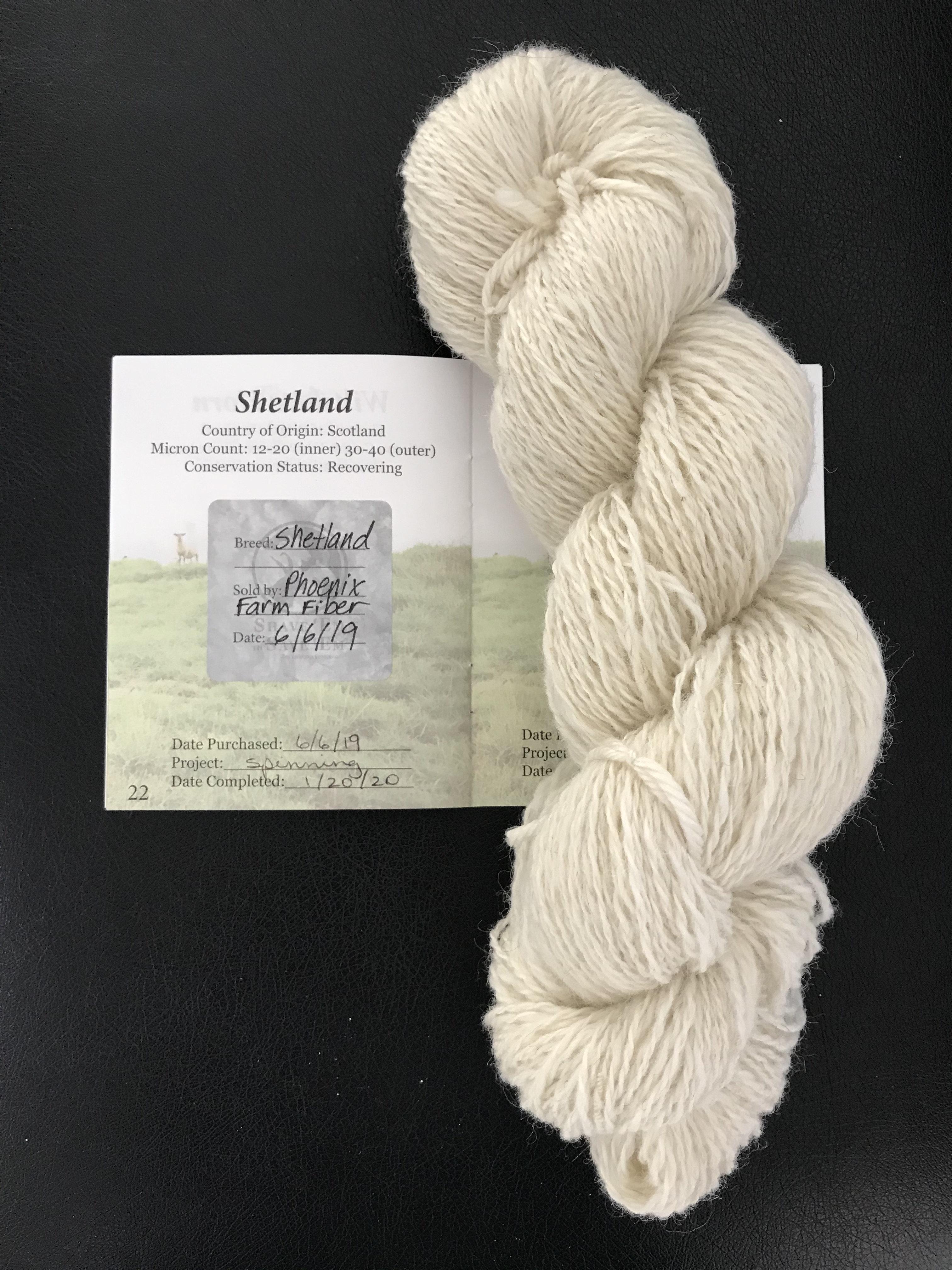
I love this yarn but I think it might be a little under-spun.
Breed 11 -Clun Forest
This information is from the Livestock Conservancy website:
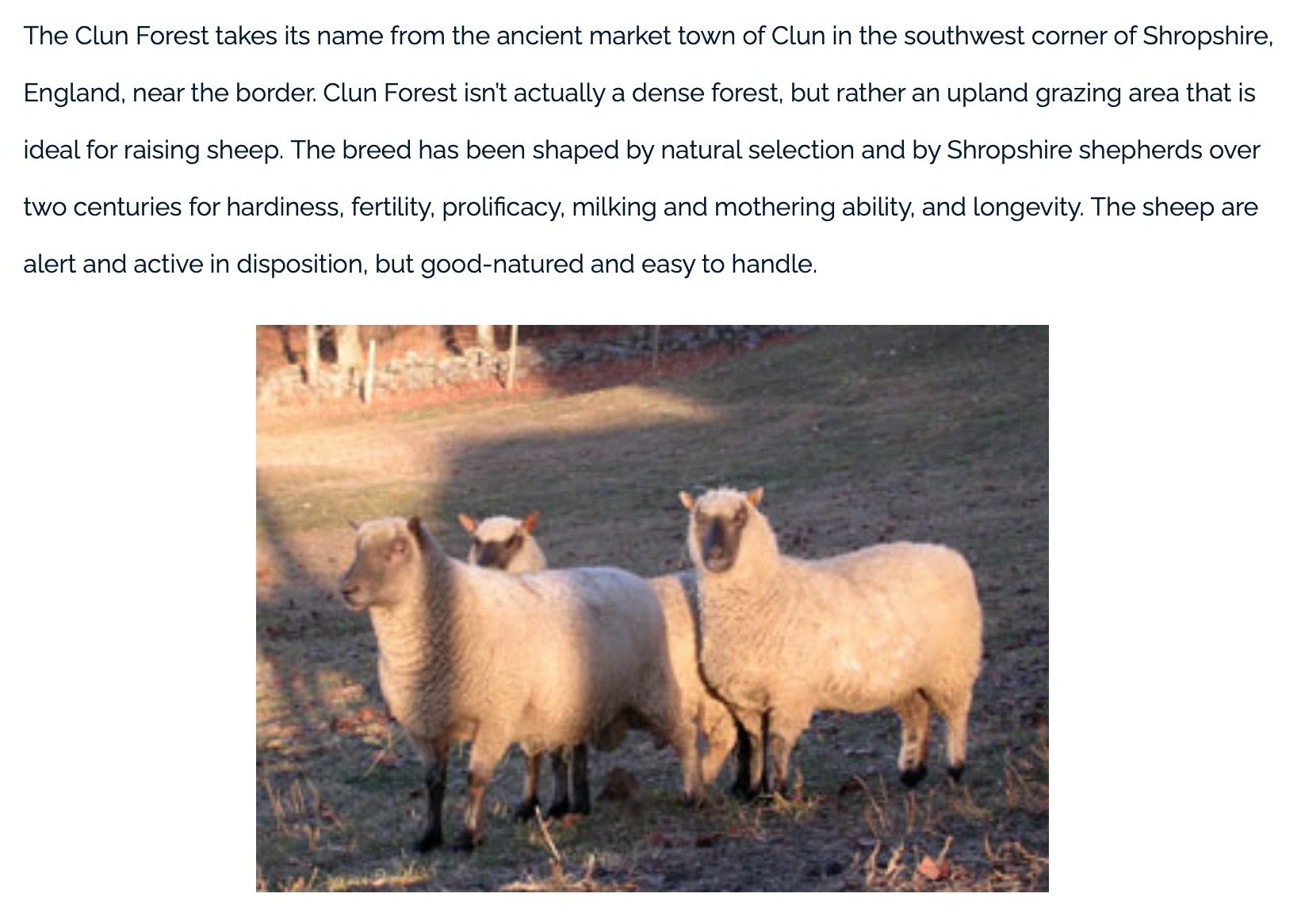
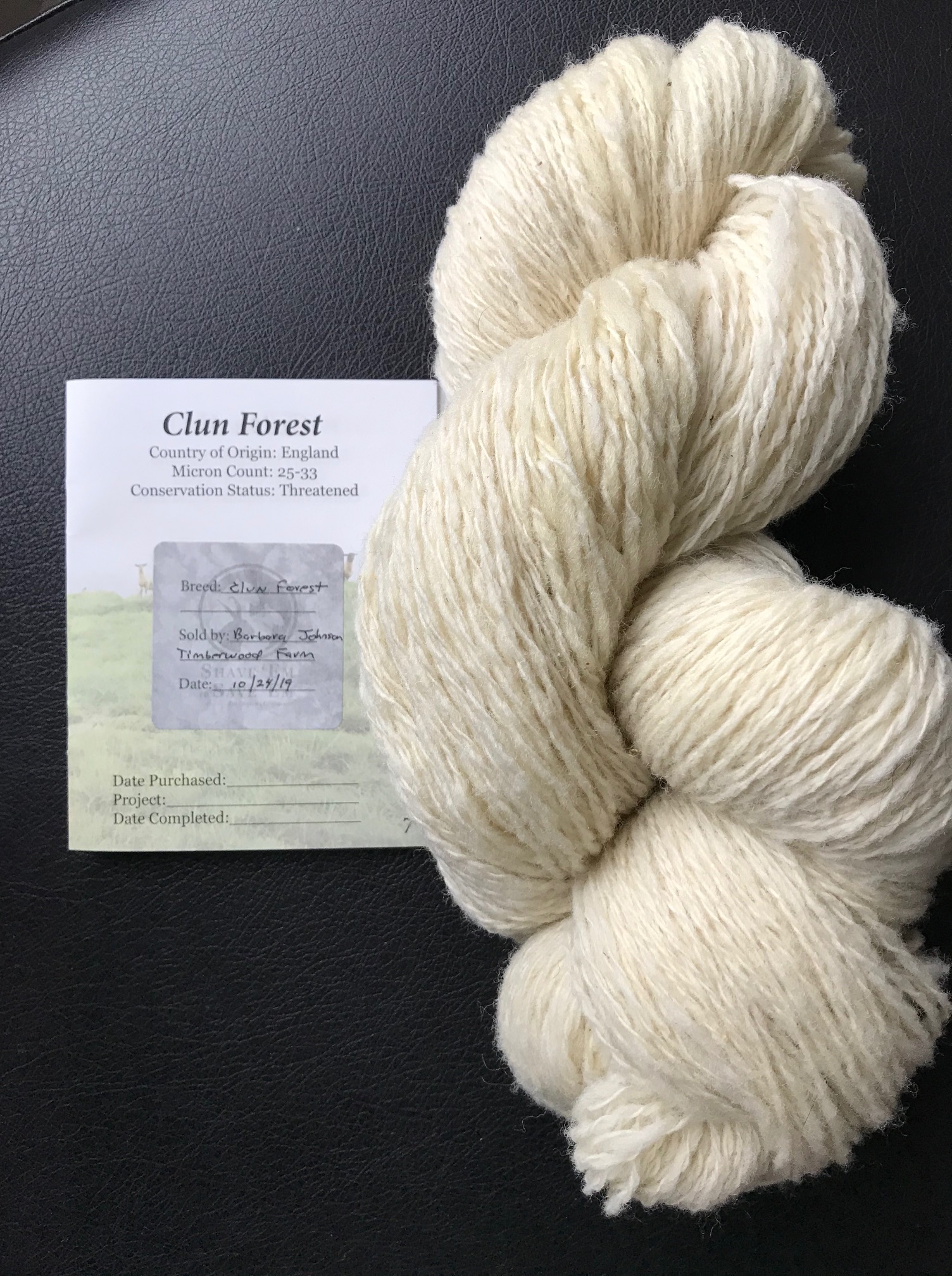
Another nice fiber!
Breed 12 -Romeldale/CVM
This information is from the Livestock Conservancy website:
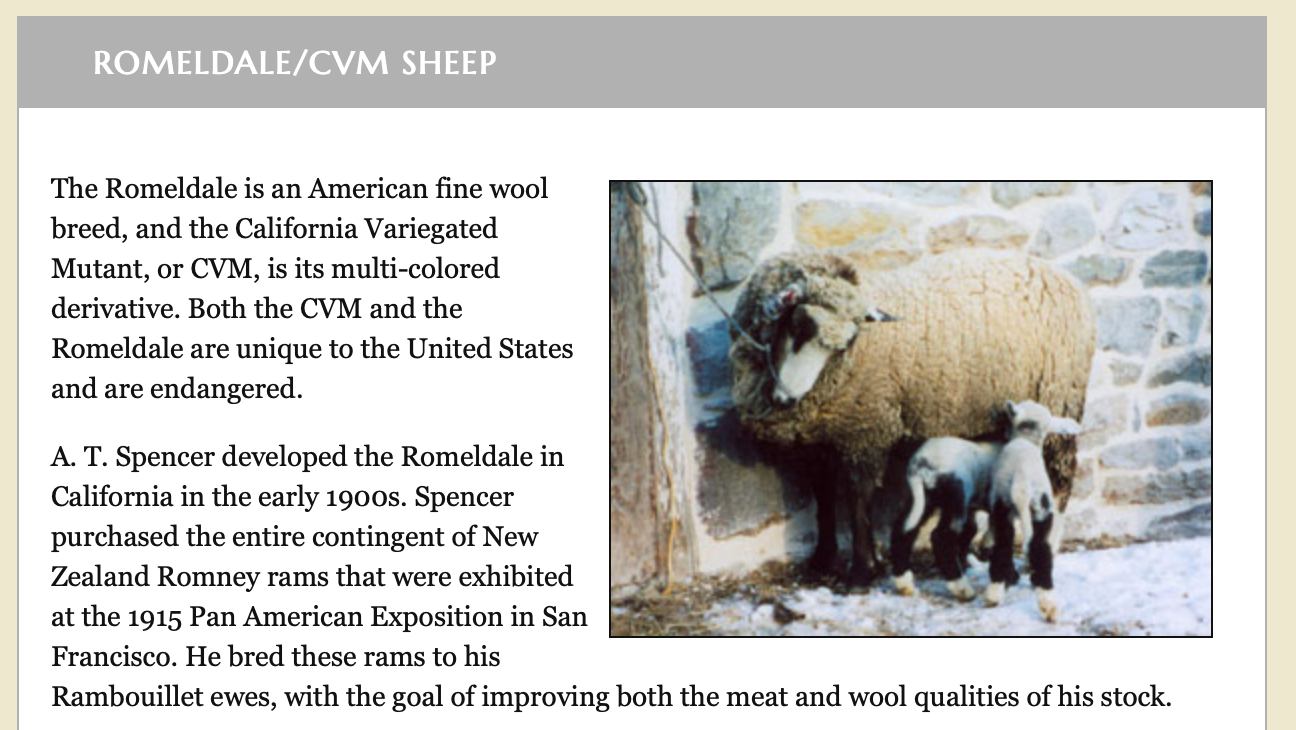
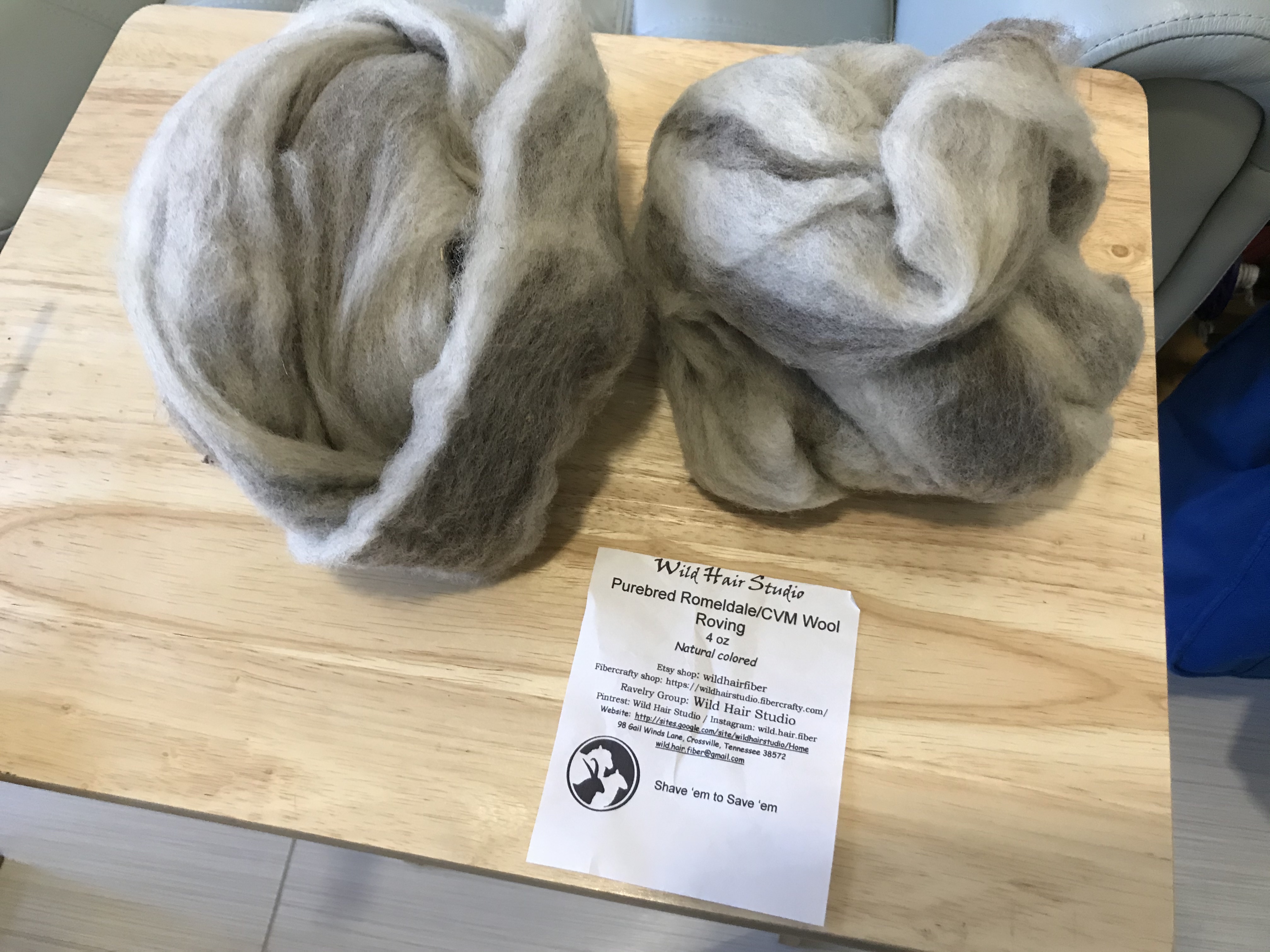
This roving is so pretty. And it was fun to spin. I know I say that about all the breeds, but they really were fun. And I learned a lot!
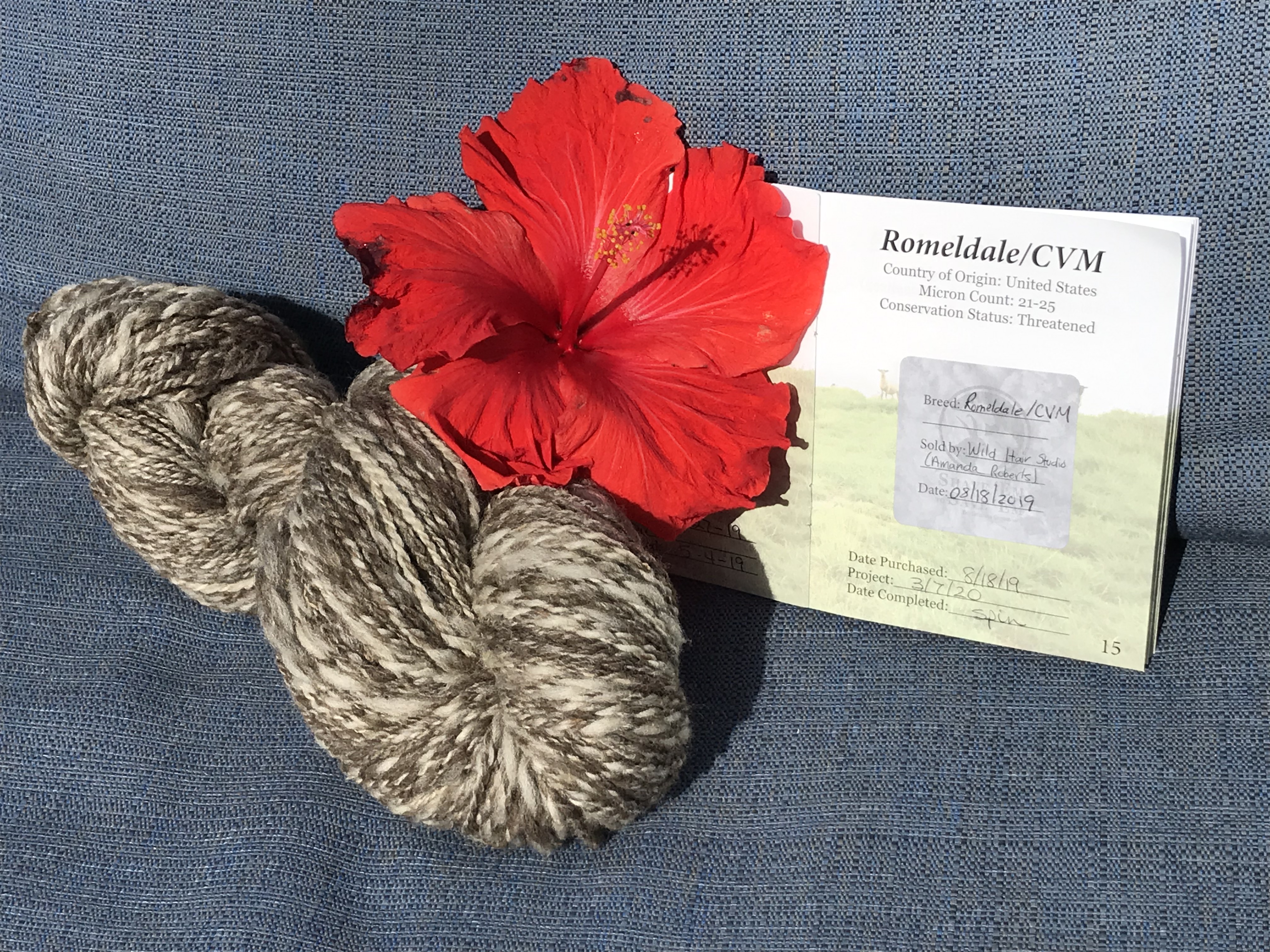
I love the variation in this yarn.
Breed 13 -Tunis
This information is from the Livestock Conservancy website:
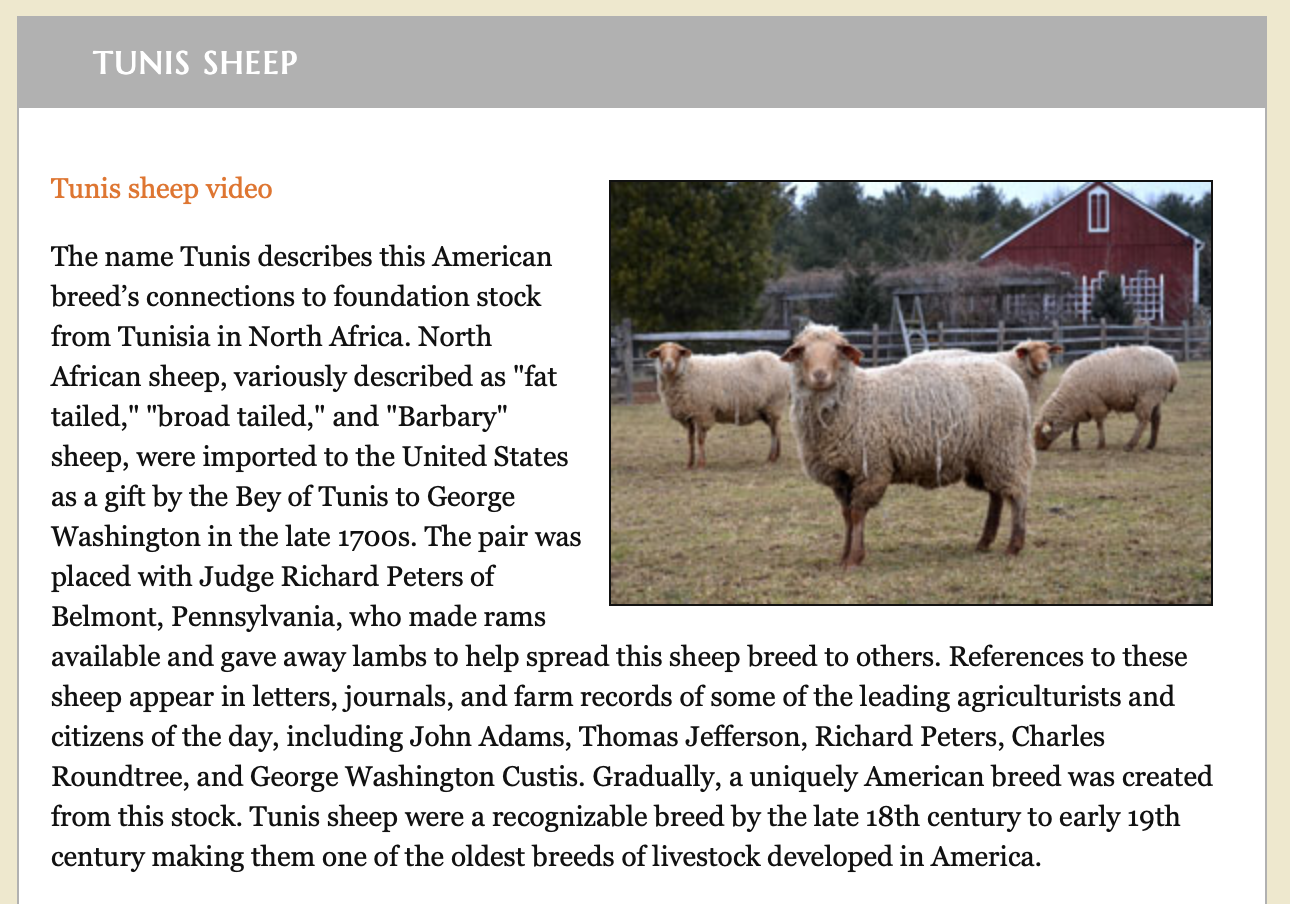
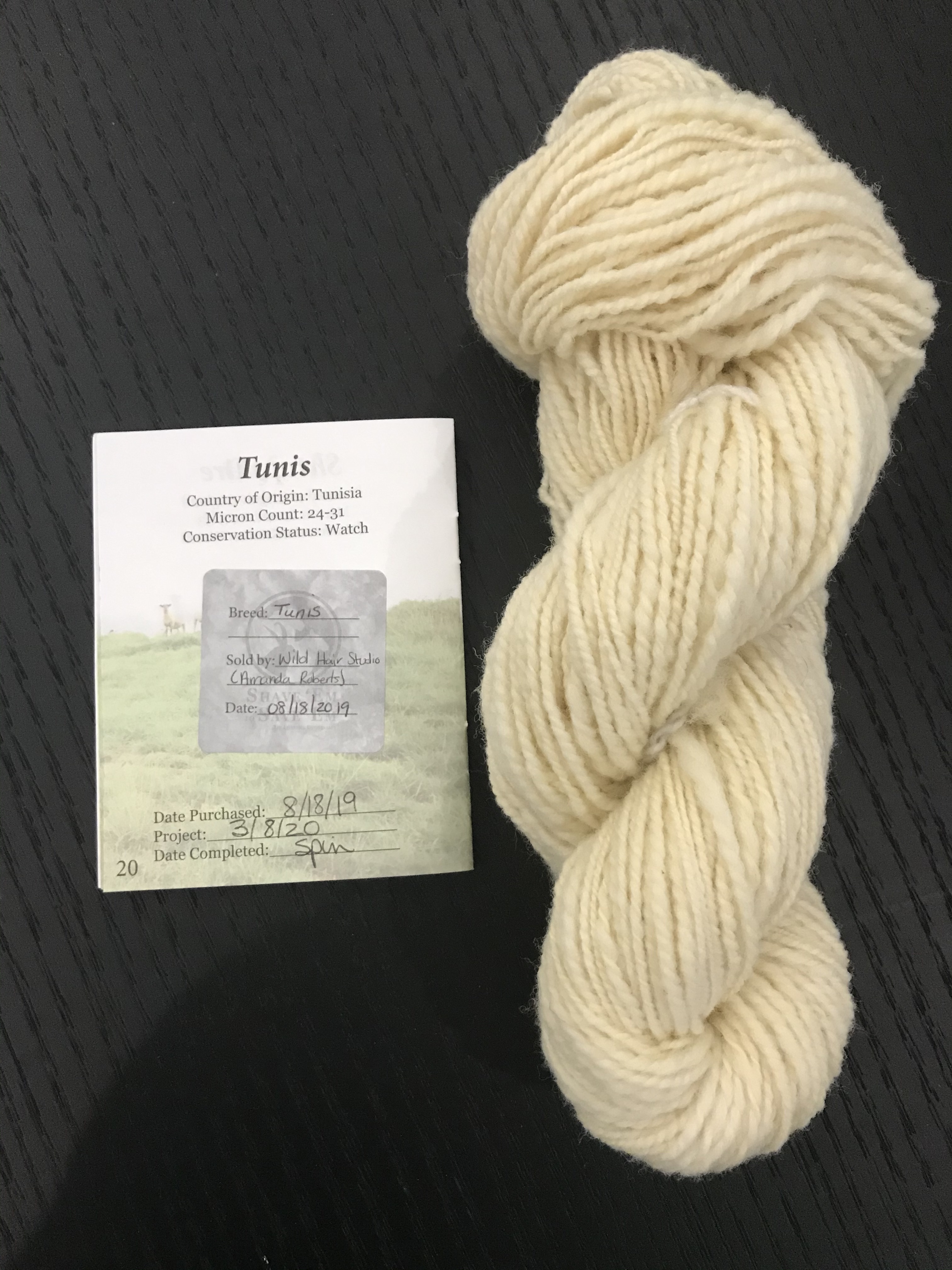
Several events and visits that I had planned were canceled due to COVID-19. As a result, I found myself with more time on my hands. I finished the last three breeds in one weekend, but I didn’t take many extra pictures. This Tunis is very spongy and springy. I practiced spinning it a little more than I had been.
Breed 14 -Lincoln
This information is from the Livestock Conservancy website:
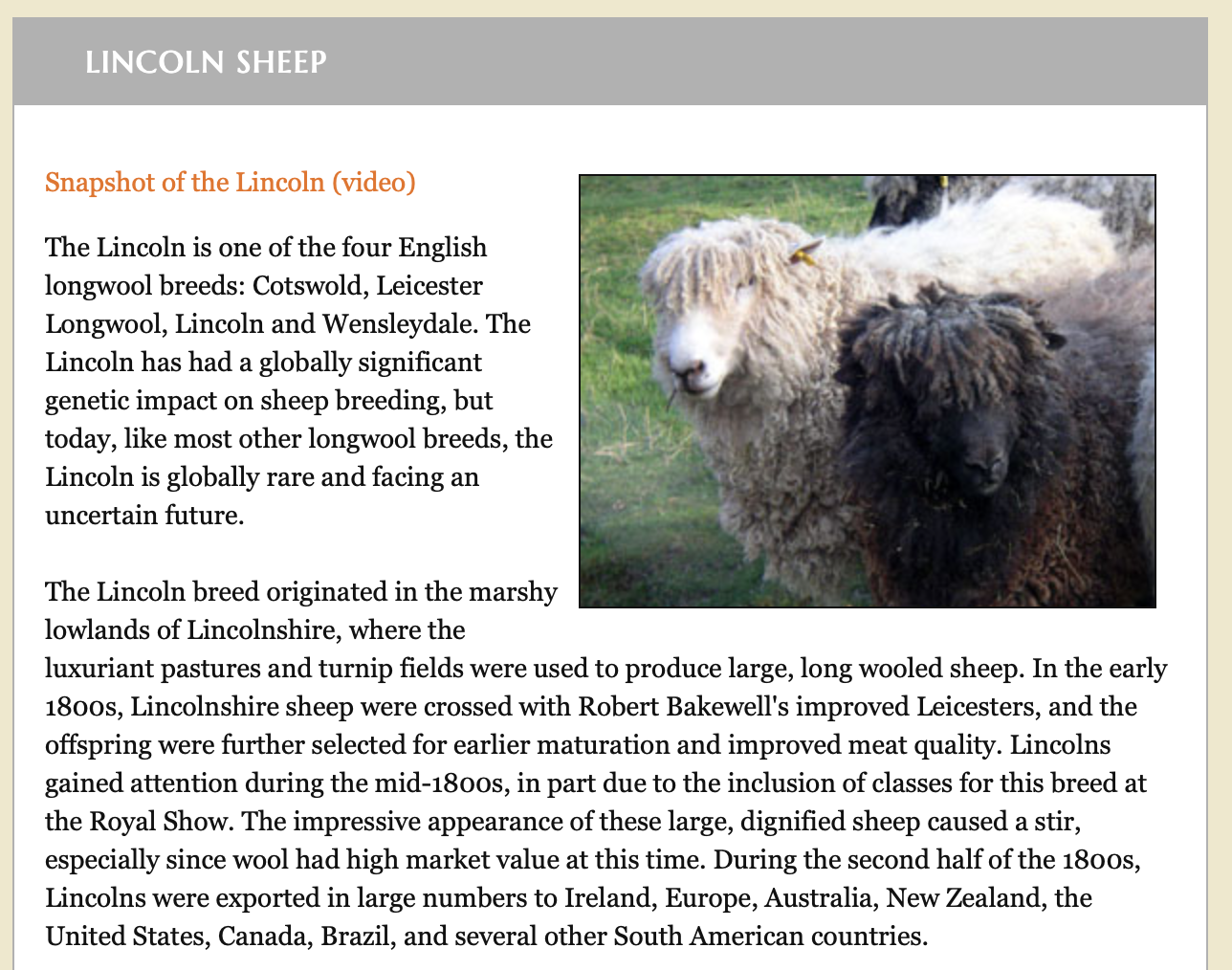
I was surprised how small this 4 oz roving was. It was very dense. I got fewer yards of this than some of the other, fluffier breeds.
Breed 15 -Southdown
This information is from the Livestock Conservancy website:
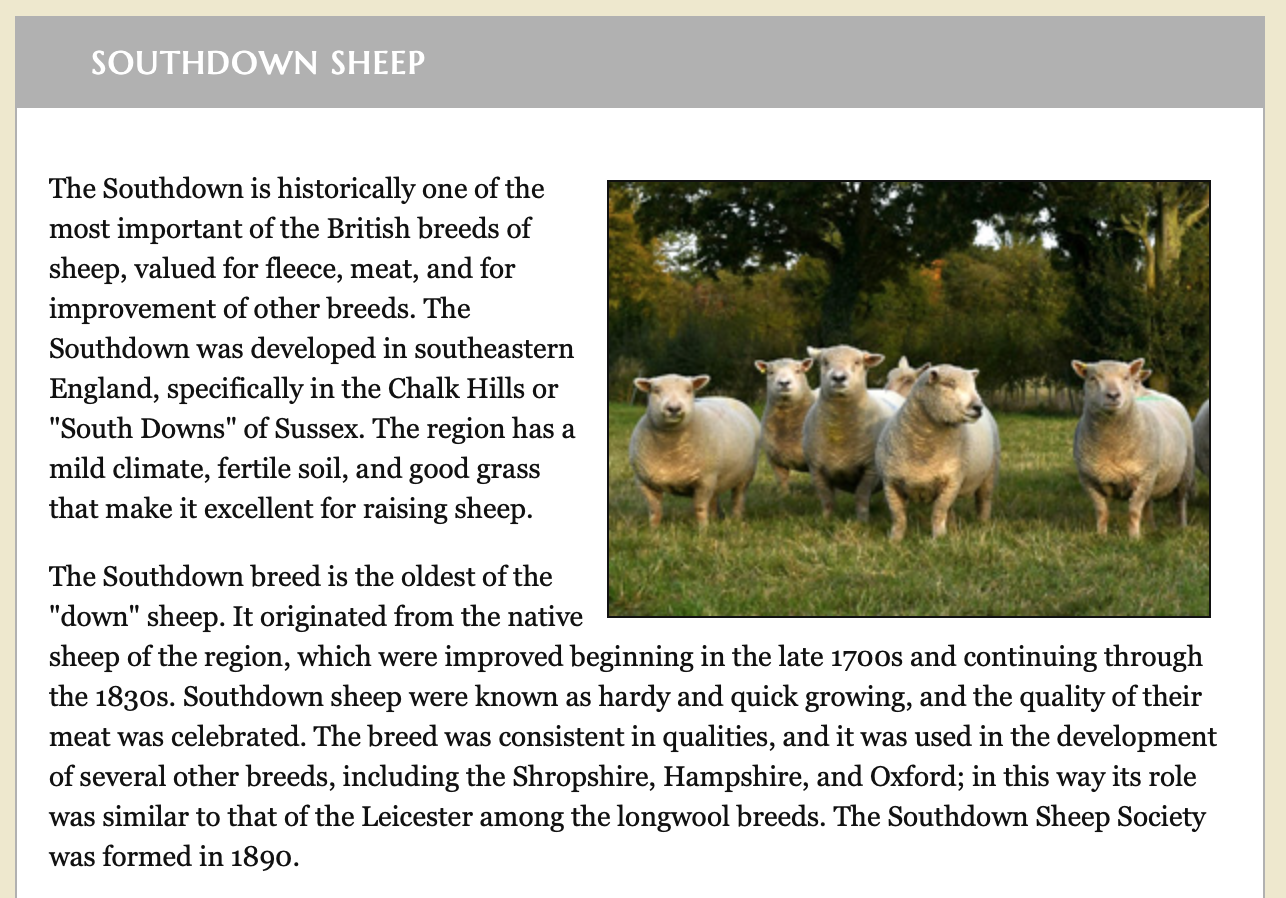
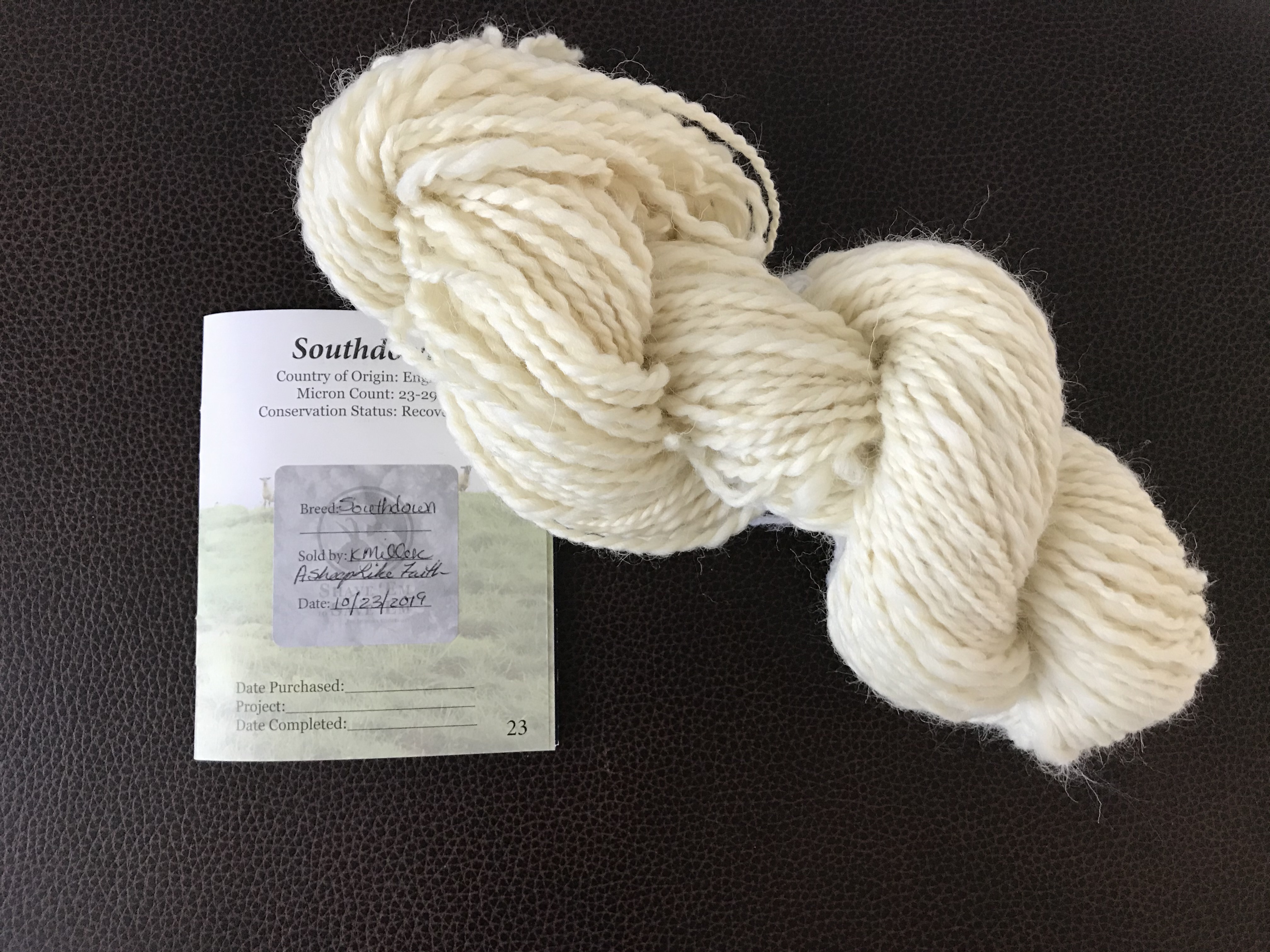
Another dense fiber.
Well, now that the 15 breeds are done, I could do the rest just for fun. Some are “hair breeds” and I’m not sure I’m ready for that. But I may return and add some more stickers to my book.

Here is a picture of all 15 breeds, in the order that I spun them. It is remarkable how different they are from each other. From left to right (2-ply yardage for a 4 oz roving): Navajo Churro (308), Hog Island (226), Florida Cracker (260), Gulf Coast Native (210), Santa Cruz Island (190), Jacob (202), Black Welsh Mountain (212), Karakul (254), Leicester Longwool (220), Shetland (290), Clun Forest (400!!), Romeldale/CVM (188), Tunis (146), Lincoln (78), Southdown (116).
The yardage ranged from a low of 78 yards (Lincoln) to a high of 400 yards for the Clun Forest. That stuff just seemed to go on and on!
Thanks for reading. As always, your polite and helpful comments are welcome.











